So, in the port of Funchal, at the beginning of the breakwater there is a very interesting structure. This is, as is claimed, “the smallest country in the world” – the Principality of Pontinha.
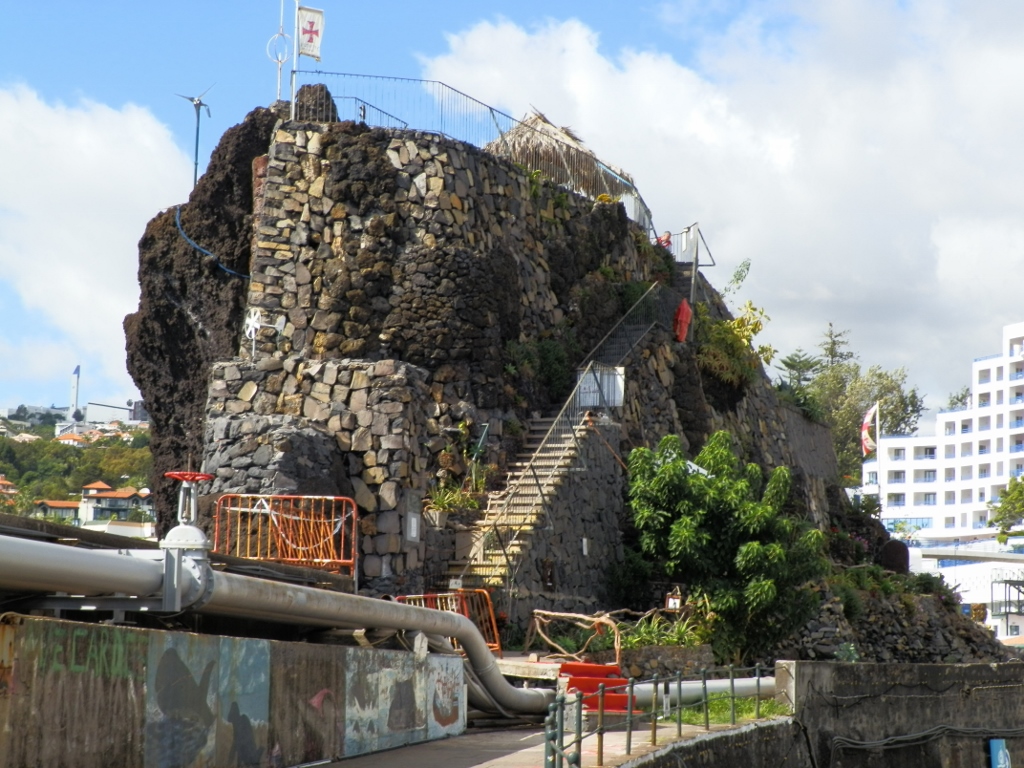 The Principality of Pontinha – this is it
The Principality of Pontinha – this is it
In the past, there used to be an islet here, practically a rock, that protruded from the ocean and that belonged to the king of Portugal. In 1903, the king sold this morsel of his territory to a family from Madeira that was dealing with wine production since he needed the money to build the port. In 2000, an arts teacher from Madeira, Renato de Barros, bought the property from that family, including also the “fort,” apparently in order to study the power of the waves. And then in November 2007, Barros filed an official request to secede from Portugal and soon he also declared the independence of the islet calling his possession the Principality of Pontinha, while entitling himself its Prince. Apparently, the 1903 sales contract contained a clause in which the king guaranteed not only the possession, but also the dominion.
All in all, Prince Renato II (the official title) demonstrated great imaginativeness and creativity, so that in addition to the 1903 Charter at the entrance into the principality it is possible to see framed photos of the prince “for schools and institutions” which also include his attributes – the Just, the Strong, as well as the Crazy (O Justo, O Forte,O Louco). I doubled with laughter when I saw this. GENIUS!!!
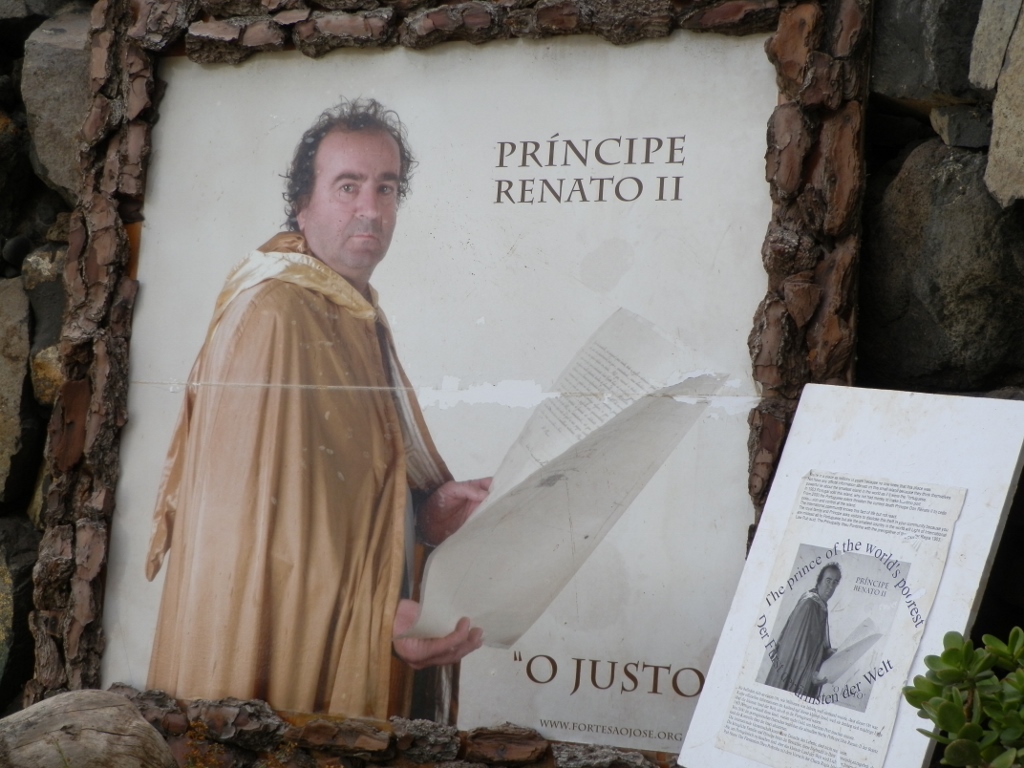 Prince II the Just
Prince II the Just
Admittedly, in the case of this poster that emphasises the attribute “Crazy” there is the name of Renato I, but this certainly may have something to do with the given attribute. Here it is also possible to see the years during which this territory belonged to the Portuguese crown – 1415 to 1903.
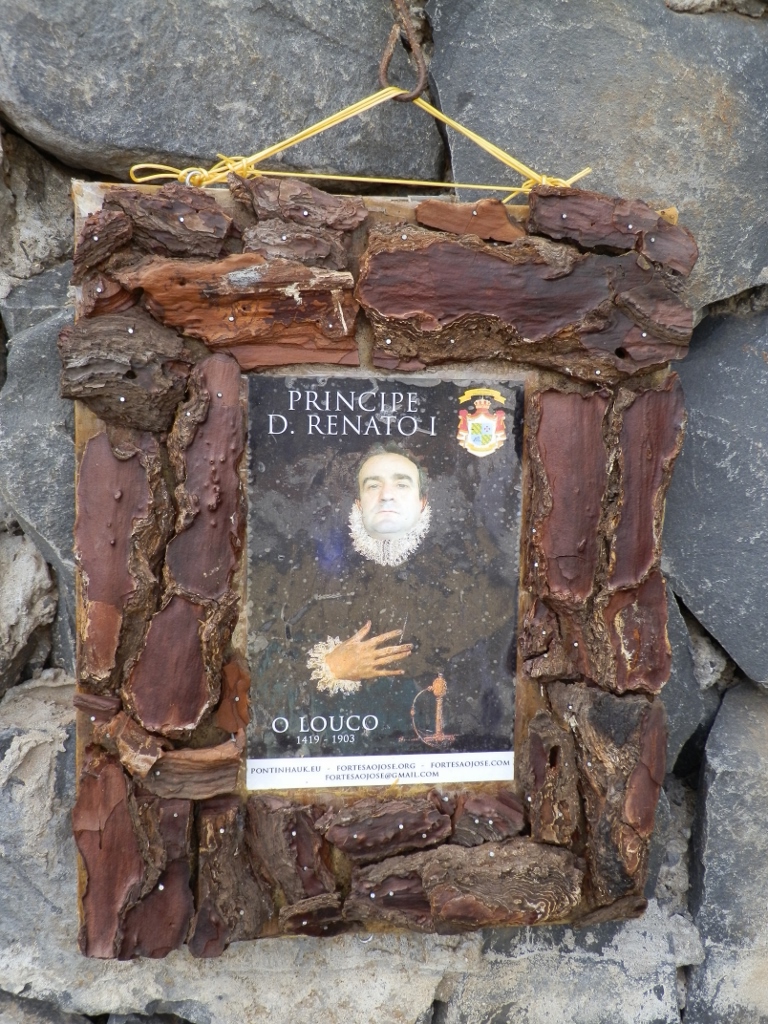 Prince Renato I the Crazy
Prince Renato I the Crazy
Over time, the prince went a step further and so in 2015 he declared bitcoin as the official currency of the principality.
But, the fun does not end even here, at least as far as I’m concerned. In 2017, a local politician from Madeira asked for a political asylum here in the principality and the prince granted it.
All in all, this self-declared independent state may certainly be visited. It’s all a little tight, bearing in mind the size of the possession, but this constitutes no impediment.
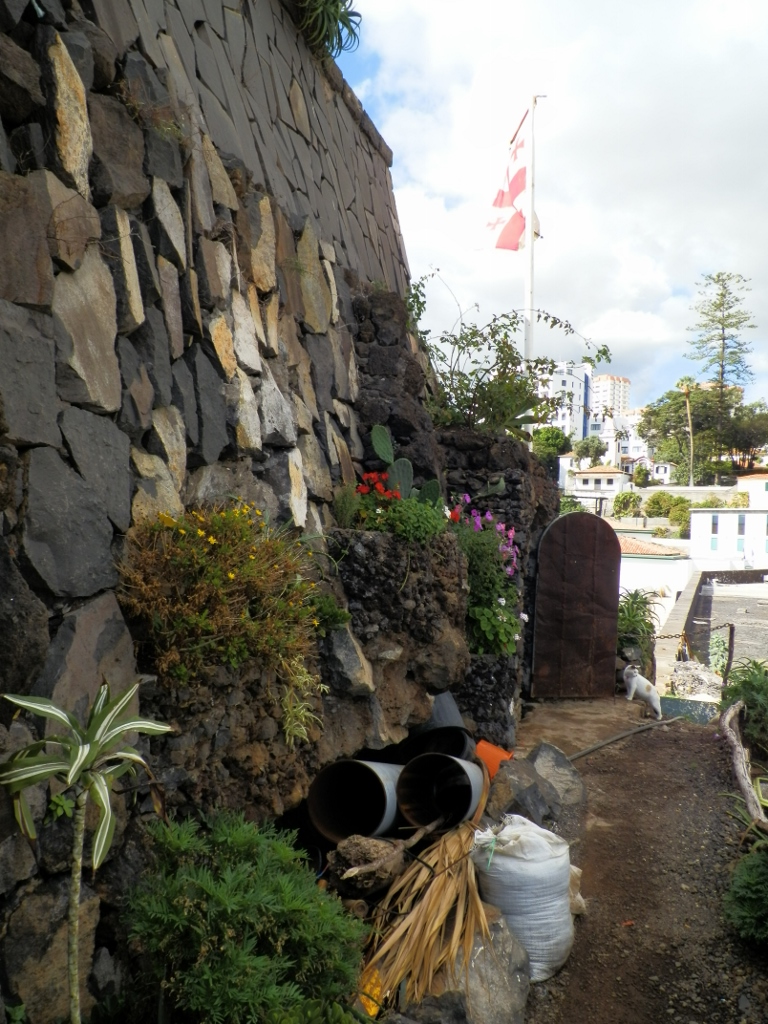 We are starting with the visit to the principality
We are starting with the visit to the principality
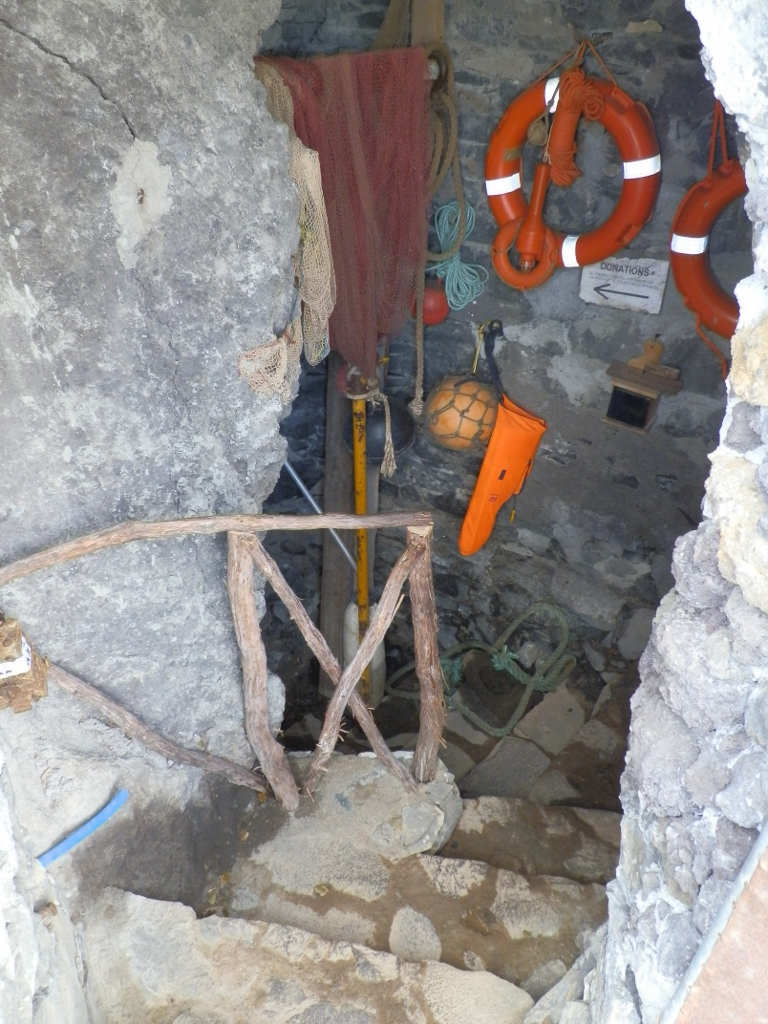 Interior of the fort
Interior of the fort
While I was visiting the principality I wondered if I would have the honour to bump into the prince himself, but I was told that he was currently not in his residence. On the other hand, there were a lot of cats at the principality and even a place where it was possible to give a donation and thus “help royal cats.”
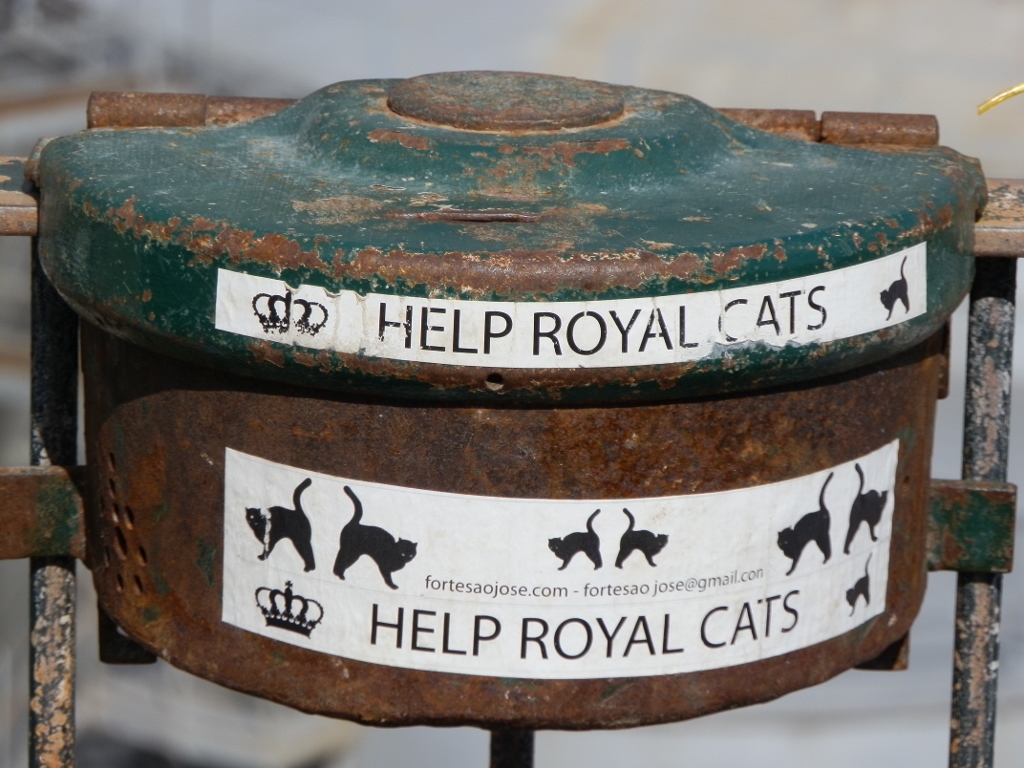 Donation box
Donation box
Joao and I went to the other side of the rock that faces the Atlantic Ocean. There are even some built benches there so that one can sit on this tiny, I guess, pier and watch those waves that were the reason why the present-day prince originally bought this property.
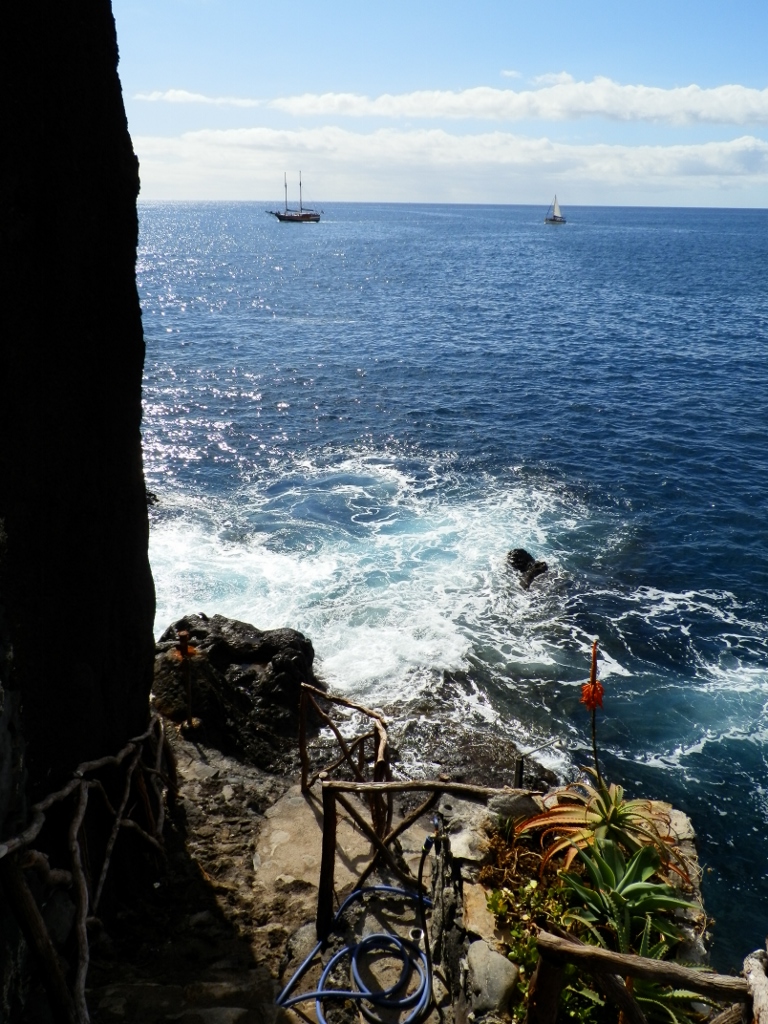 Path leading to the access to the ocean
Path leading to the access to the ocean
It needs to be said that not all the parts are foreseen for visitors, but it is certainly possible to get both to the pier and to a spacious terrace on the top from which there are some very fine views in all directions. Approximately right at the point where the Principality of Pontinha and this breakwater are starts a completely tourist part of Funchal. As it may be seen in the following photo, there are big hotels, pools ... Also, at the beginning of this tourist section I noticed a large poster advertising the CR7 Museum (Museu CR7) dedicated to Cristiano Ronaldo. Residents of Madeira are really very proud of him.
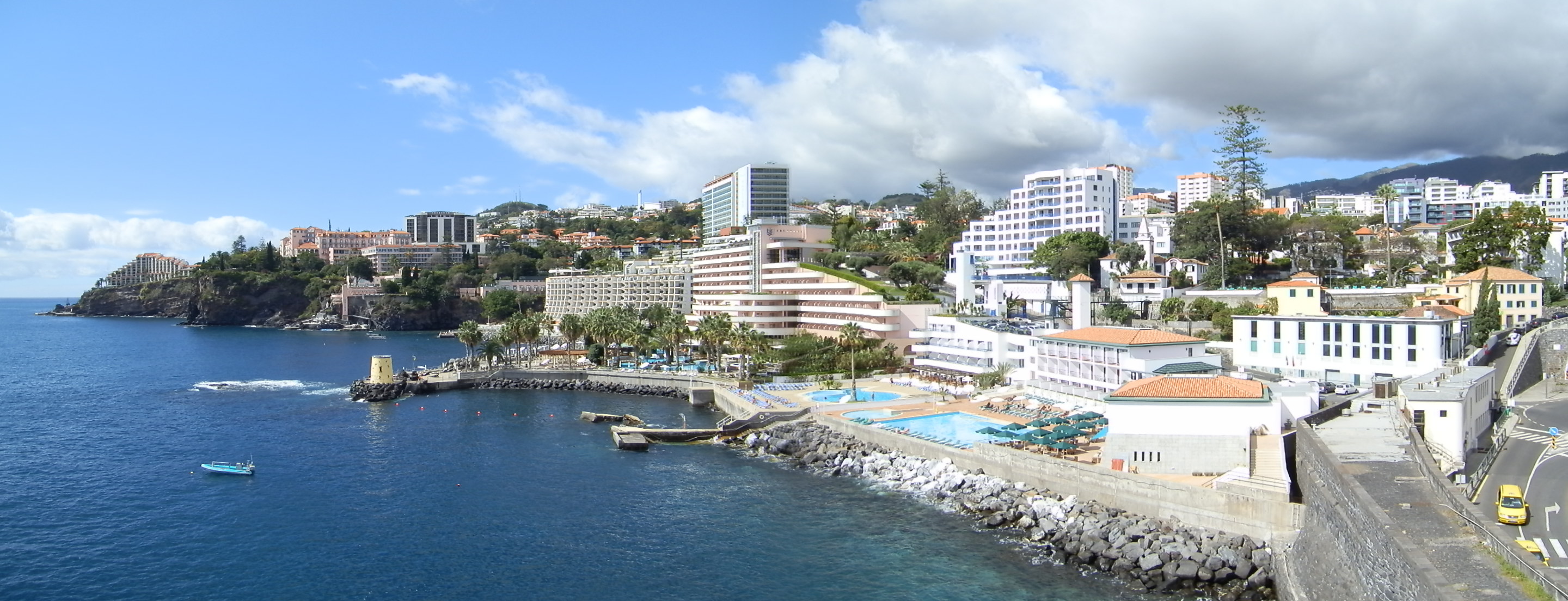
While we were standing on the terrace of the Principality of Pontinha, a tourist ship appeared, apparently the Santa Maria, replica of Christopher Columbus's flag ship. In the sea of modernity, it was interesting to see this ship from the 15th century.
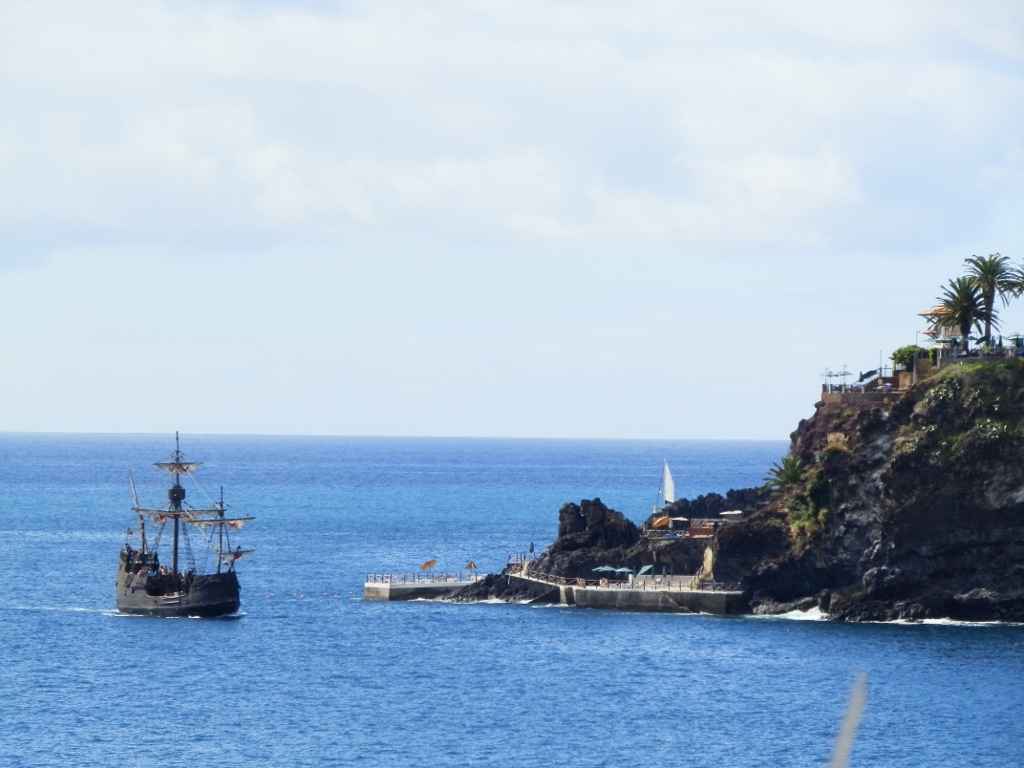 The Santa Maria and modern pools
The Santa Maria and modern pools
This ship is used for tourist excursions where visitors sail a little, swim a little, probably eat a little..., and all of this in the ambient of some old times.
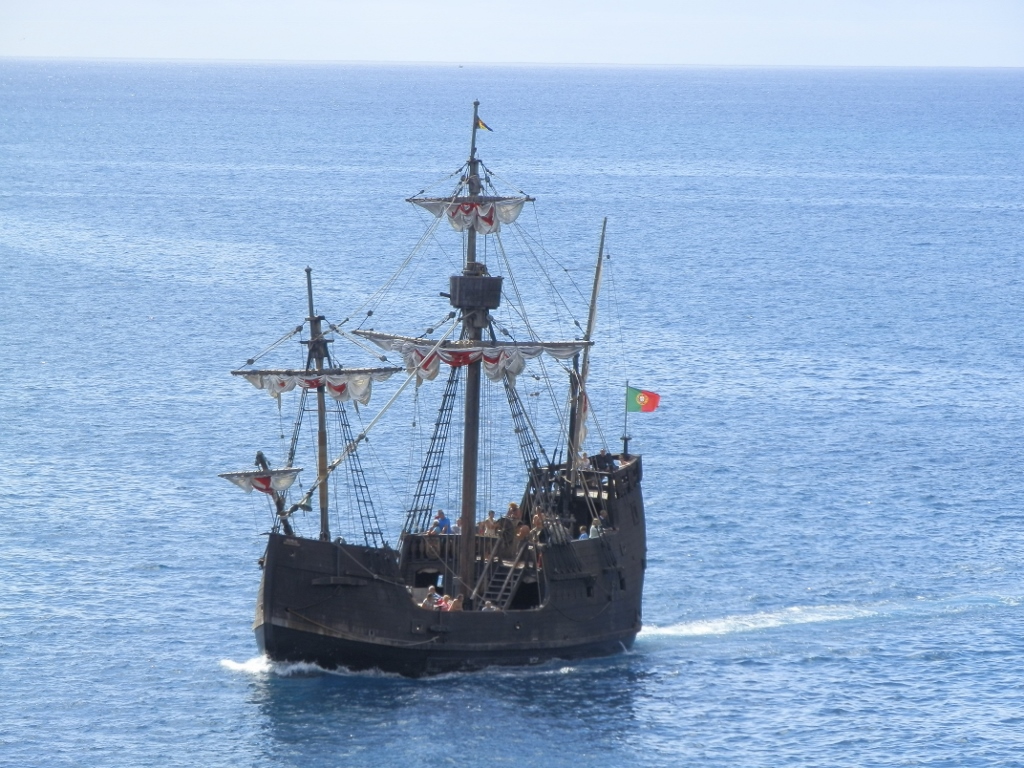 The Santa Maria
The Santa Maria
Later in the afternoon, when Joao and I returned to the port again, we happened to be there right at the time when this ship was passing beside a docked cruiser. I recorded this passage by my video camera and I find it truly amazing on what they used to sail back in the 15th century. They had the guts, that’s for sure, although admittedly they did not know better or safer at the time.
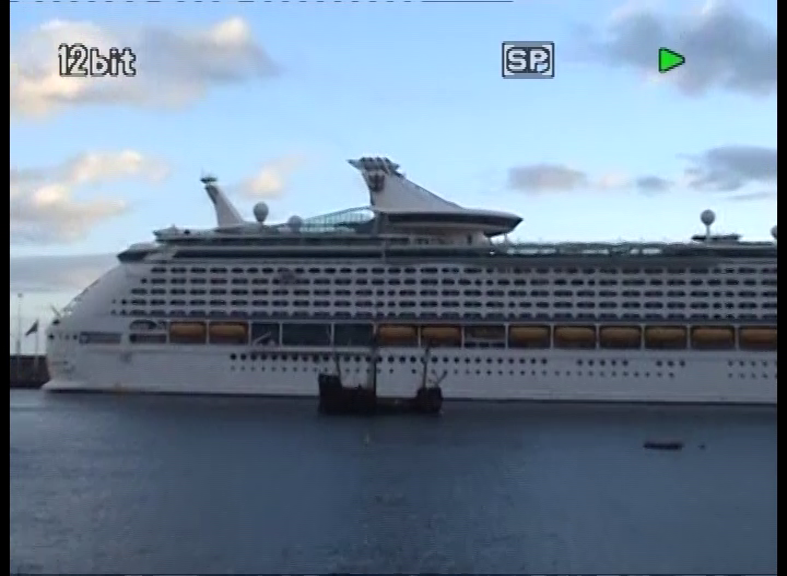 The 15th and the 21st centuries in one spot
The 15th and the 21st centuries in one spot
From the beautiful terrace on the top of the Principality of Pontinha I could also see that cruiser which spent the entire day in the port.
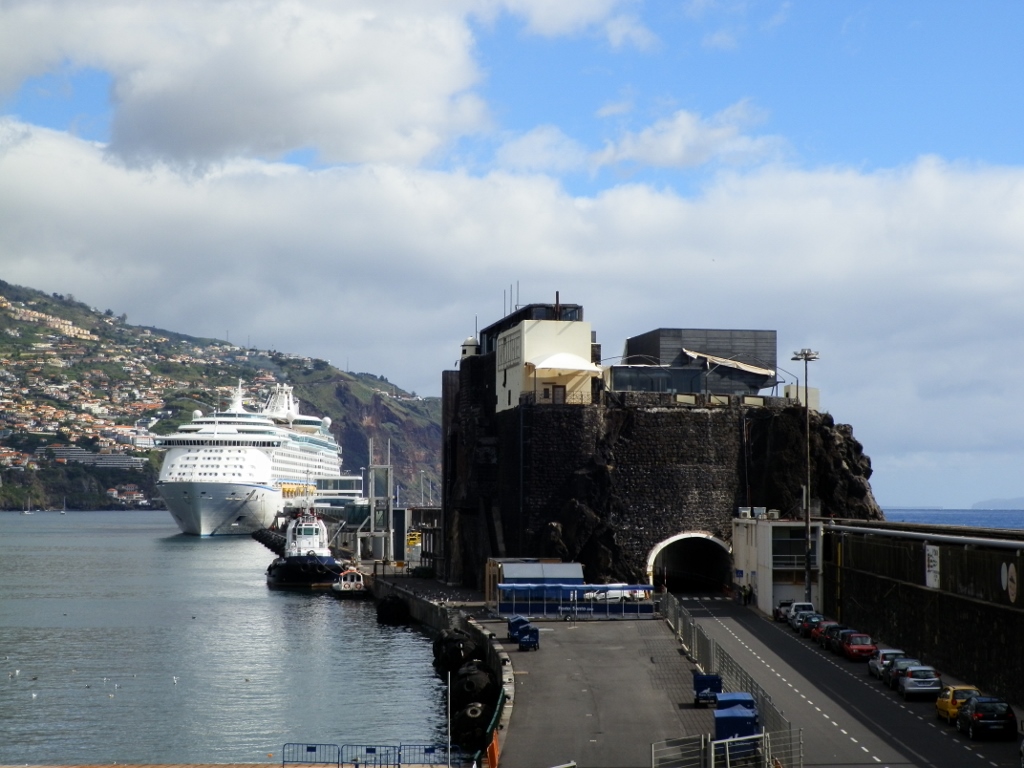 Cruiser and the pier from which the ship to Porto Santo leaves
Cruiser and the pier from which the ship to Porto Santo leaves
Also, from the terrace on which there are benches and straw parasols for additional enjoyment in the views, it is possible to see beautifully not only the port, but entire Funchal.
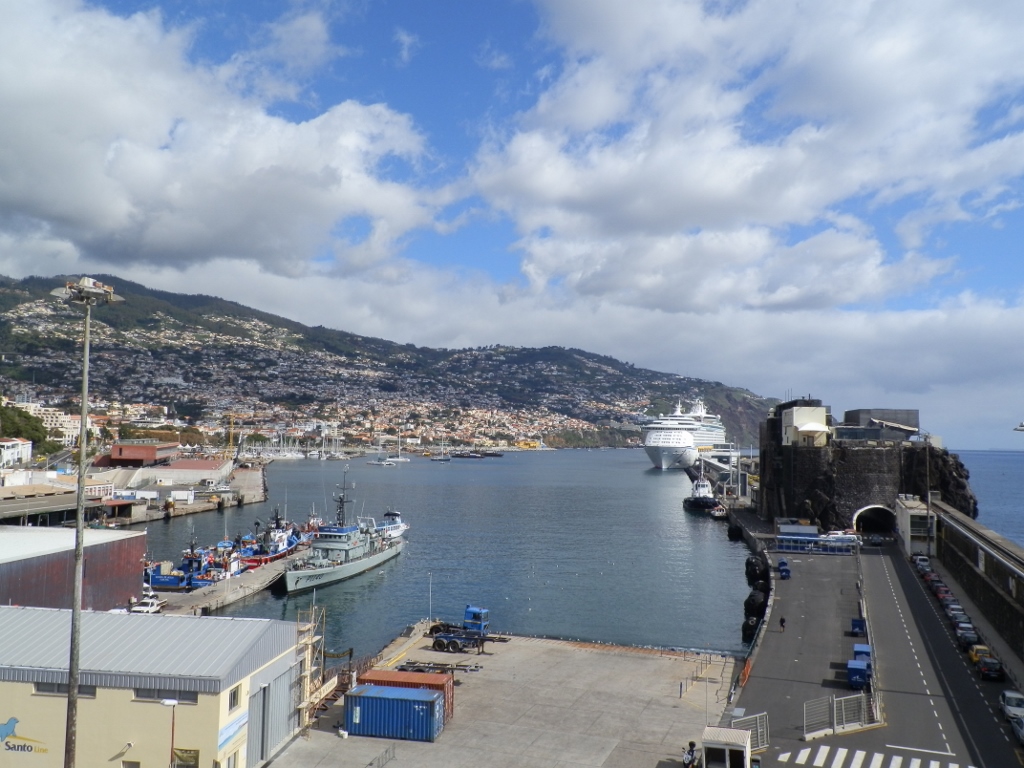 View from the terrace
View from the terrace
So, here we completed our tour of the Principality of Pontinha and when we left it I took one more photo. The entire country fits easily into a photograph.
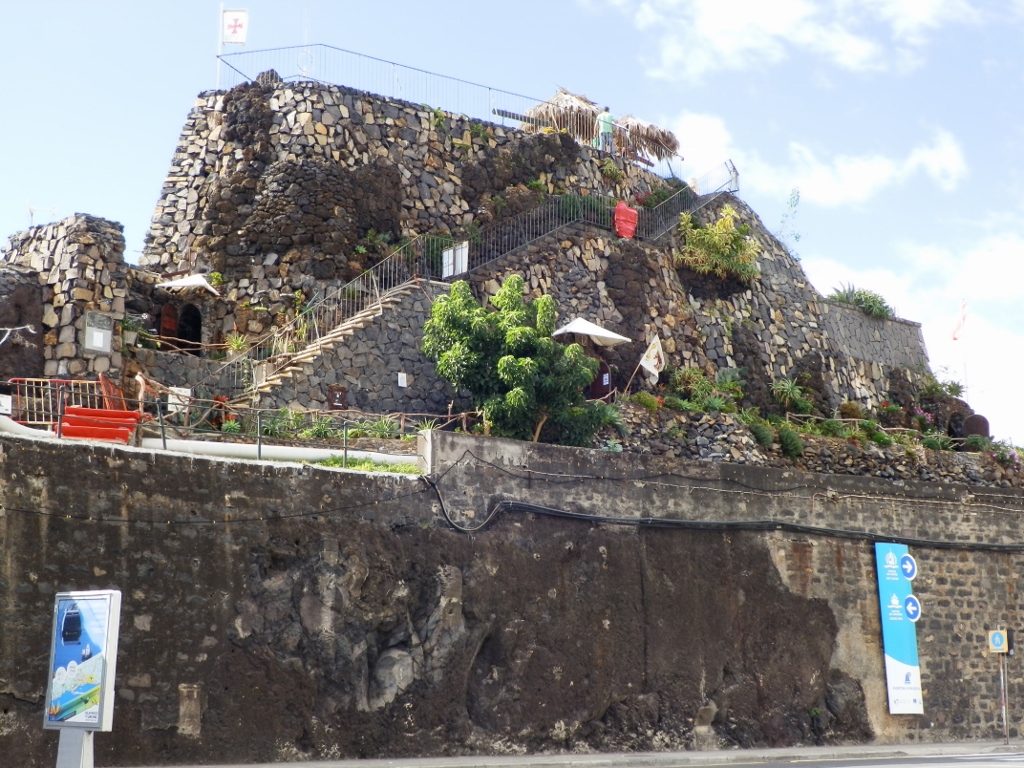 The Principality of Pontinha, according to some – the smallest country in the world
The Principality of Pontinha, according to some – the smallest country in the world
Since we had already solved the issue of the tickets for the tomorrow's trip to Porto Santo, Joao and I walked to the main farmers’ market in the city – Mercado dos Lavradores. I always like to visit farmers’ markets, especially when they are so picturesque and exotic for me.
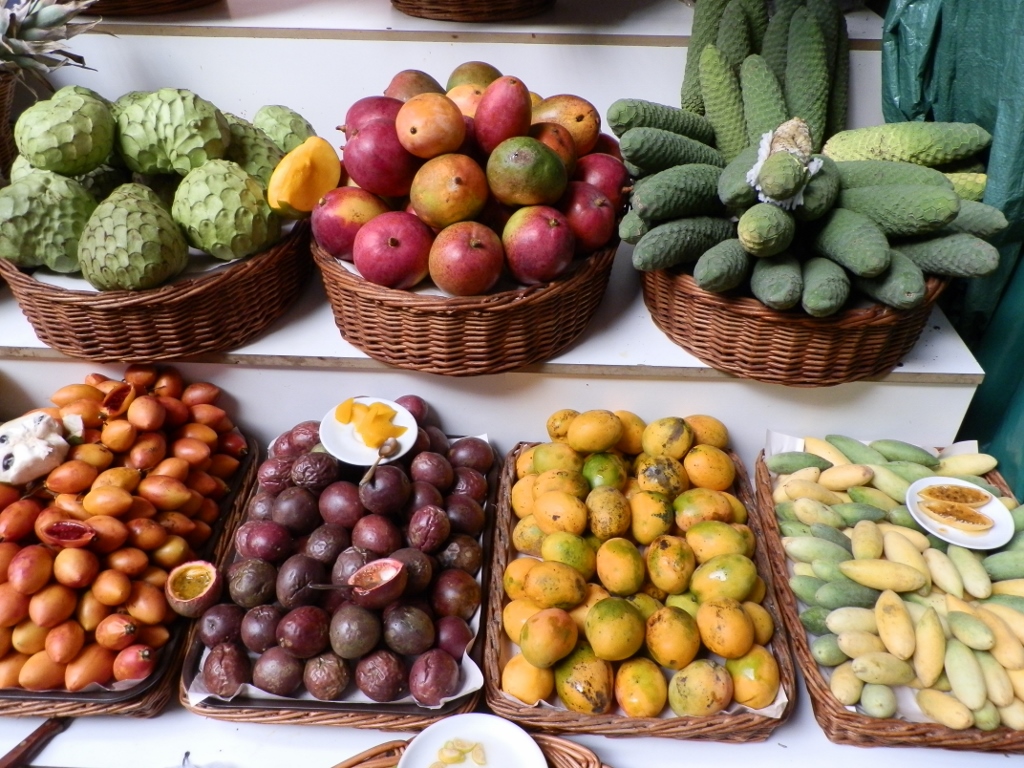 Fruits at the market in Funchal
Fruits at the market in Funchal
I bought some fruits there and put them in my small backpack to take back to the hotel room and there we also took advantage of the vendor’s kindness to take a photo of the two of us.
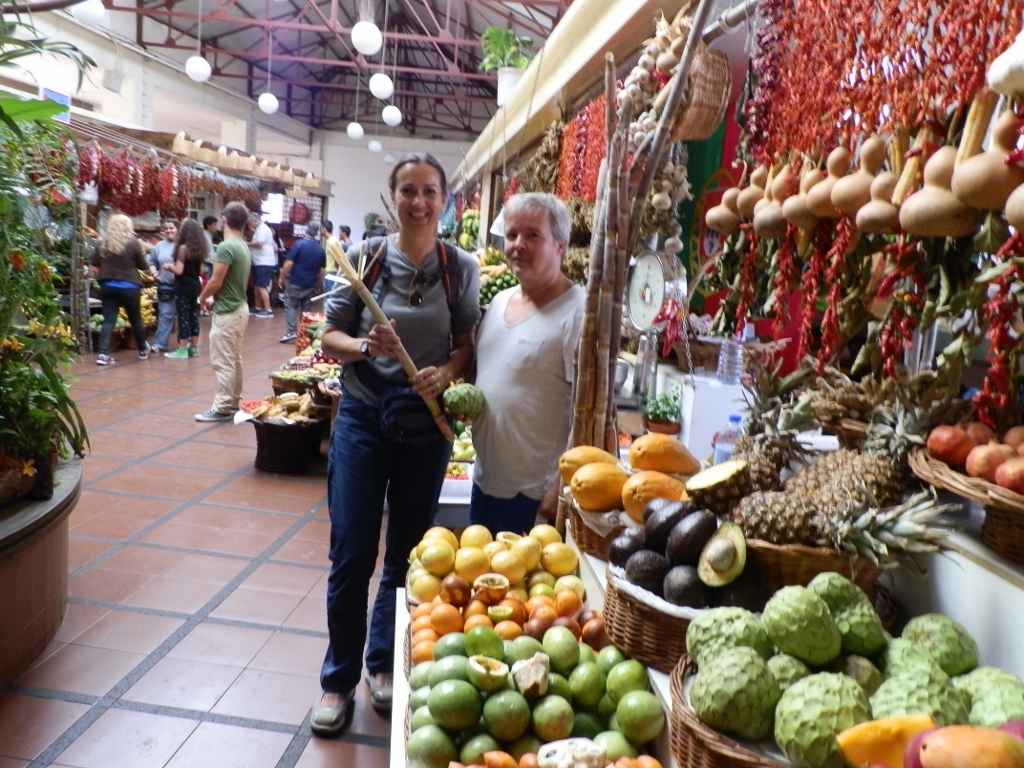 Joao and I at the market in Funchal
Joao and I at the market in Funchal
Since in addition to fresh fruits there were also “freshly squeezed” juices on offer at the market, I took an exotic combination, but it turned out they were putting in too much water, so I would not recommend that.
We continued with our walk towards the centre and on our way we passed by a small square behind the Cathedral where every day women in traditional dresses sell fresh flowers. There was certainly a lot of flowers back at the market, but this was more intended for tourists. At least that was my impression.
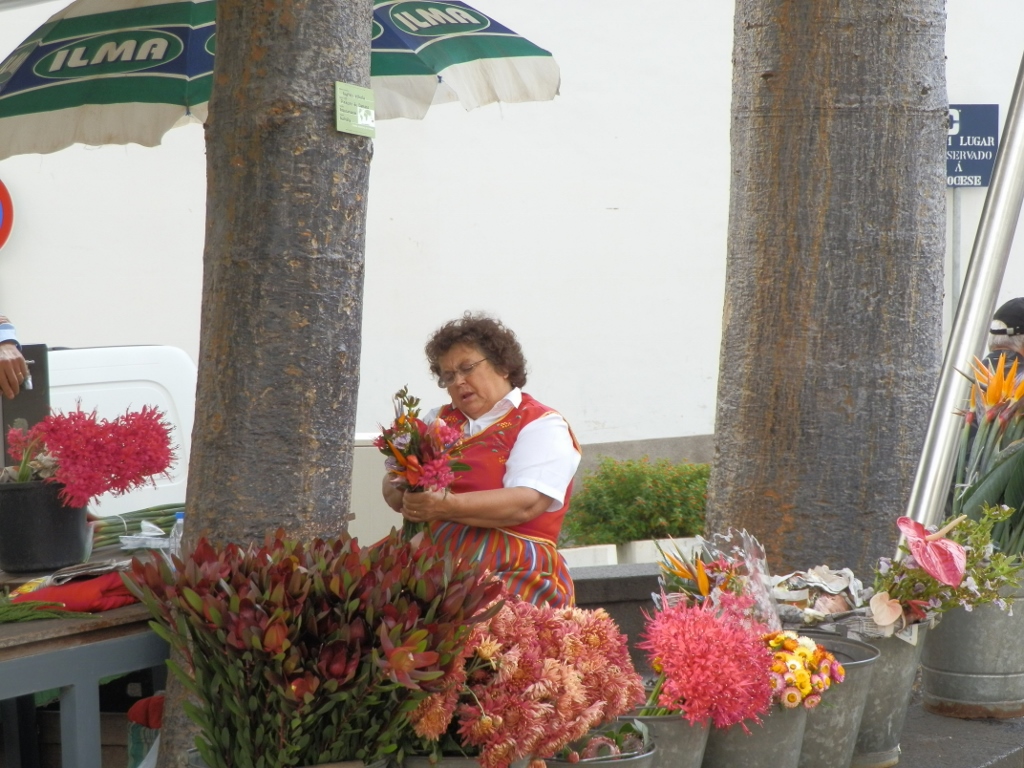 A bouquet is being made
A bouquet is being made
Walking around the centre, I took the opportunity of the favourable sunlight to take again photos of some of the important sights in Funchal.
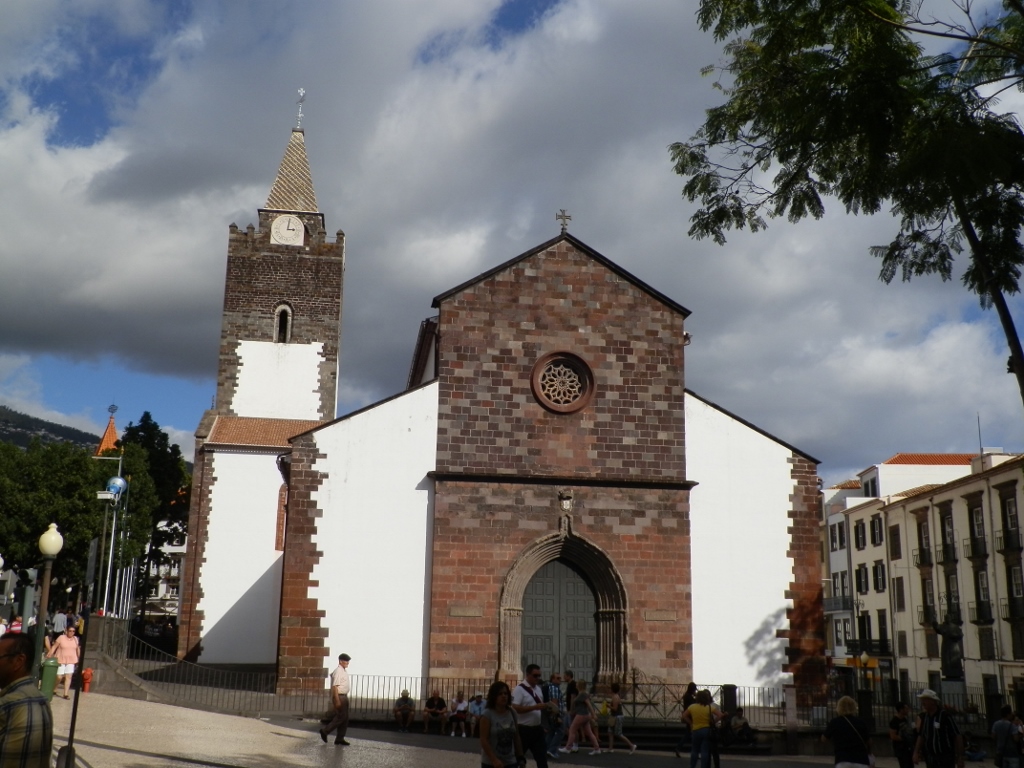 Cathedral in Funchal
Cathedral in Funchal
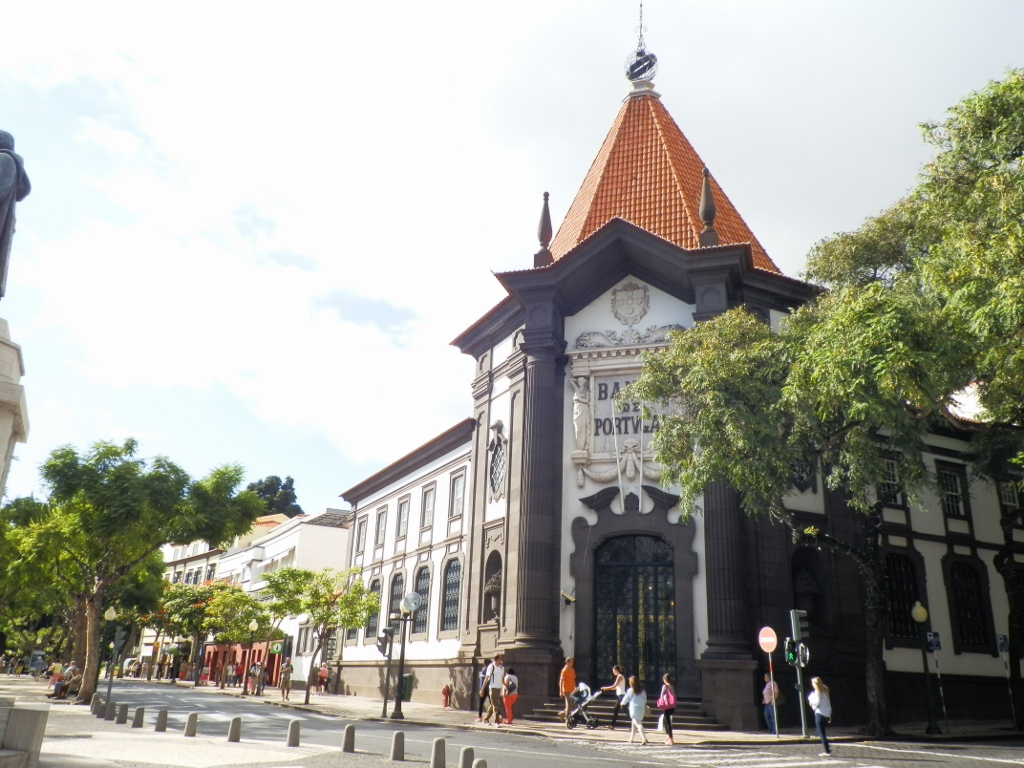 Bank of Portugal – Madeira branch of Portugal’s central bank
Bank of Portugal – Madeira branch of Portugal’s central bank
And then again came the time for Joao and me to sit somewhere and take coffee. This time, along with the coffee I ordered some of the scrumptious Portuguese pastries - pastel de nata. I had already eaten them before – these are puff-pastry tarts filled with glorious vanilla custard. Perfect!
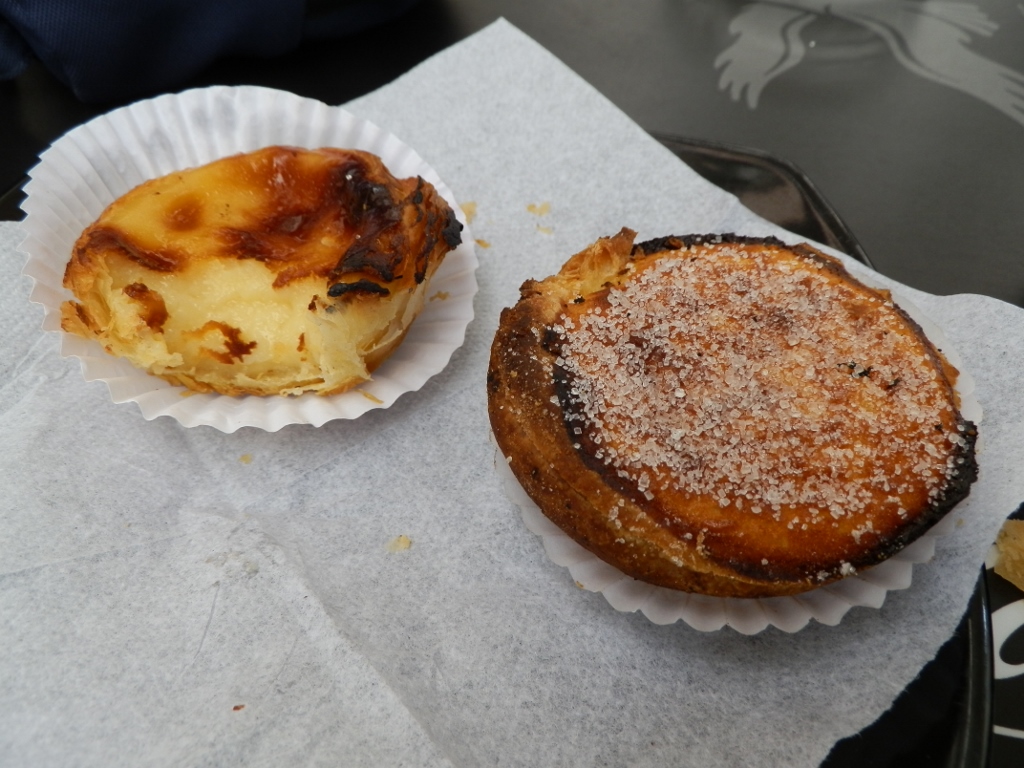 Pastries in Portugal
Pastries in Portugal
Then Joao and I parted for a short while, for I wanted to take my purchase up to the hotel room, while also getting something from there.
As I was not in any great hurry, I slowly zigzagged in the general direction of the hotel, looking at different sights and interesting things I was coming across.
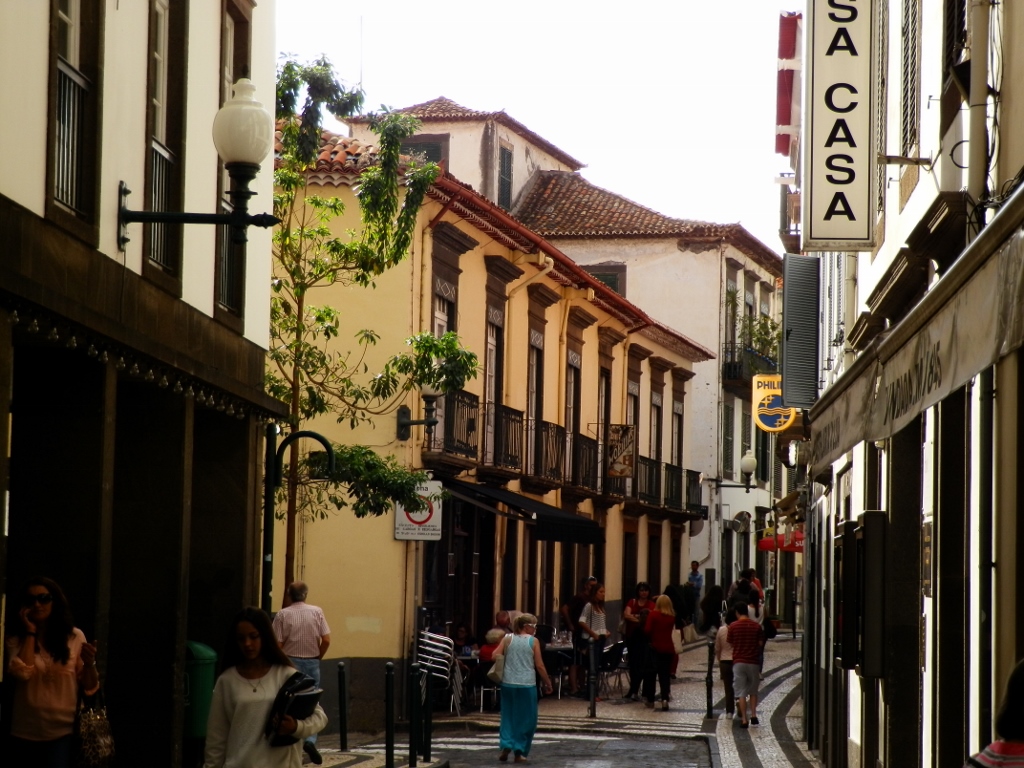 Rua da Carreira - pedestrian street with a lot of restaurants
Rua da Carreira - pedestrian street with a lot of restaurants
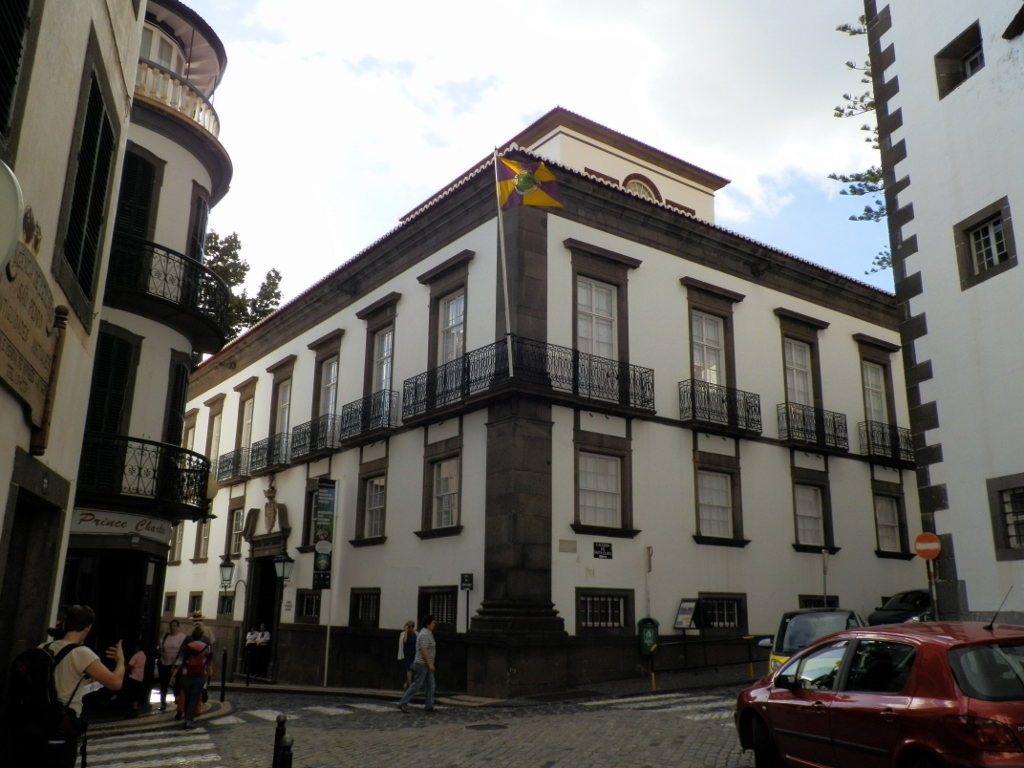 Natural History Museum of Funchal (Museu de Historia Natural do Funchal)
Natural History Museum of Funchal (Museu de Historia Natural do Funchal)
The Natural History Museum of Funchal is situated right next to St. Peter’s Church (Igreja de São Pedro) that I have already written about in part 3 of my Madeira travel stories. From there, it was all uphill, but I had already gotten used to it somehow and did not find this climbing too strenuous.
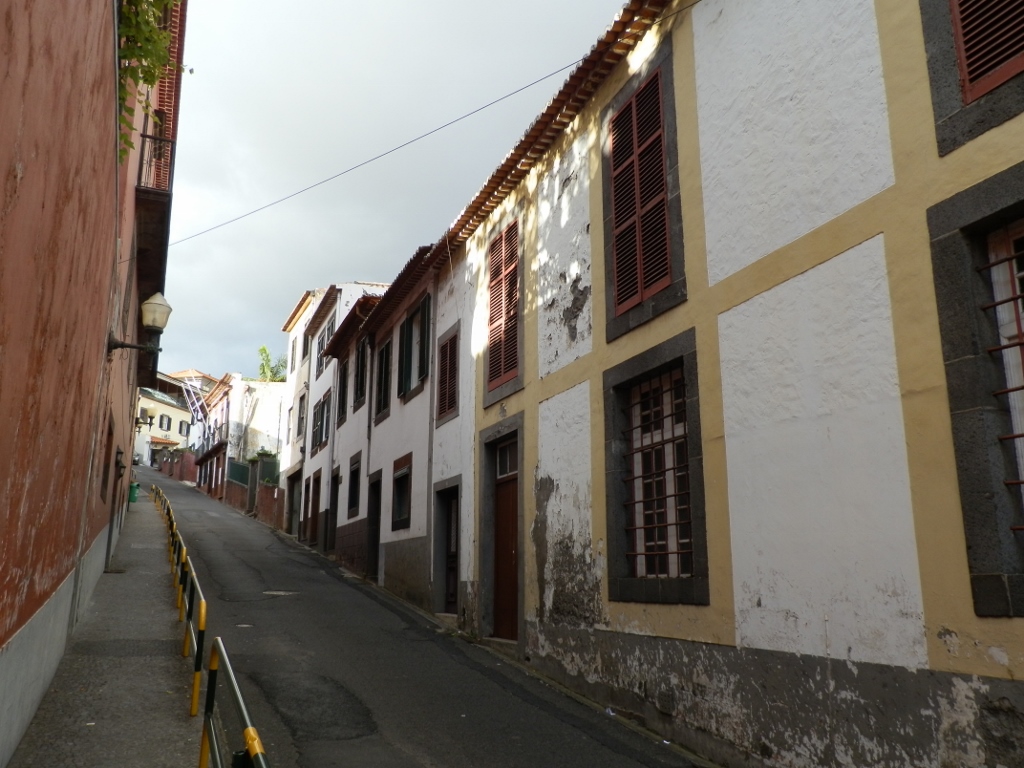 Steep street in Funchal
Steep street in Funchal
Perhaps these houses here were not as polished as those in the centre, but they were certainly no less picturesque and interesting.
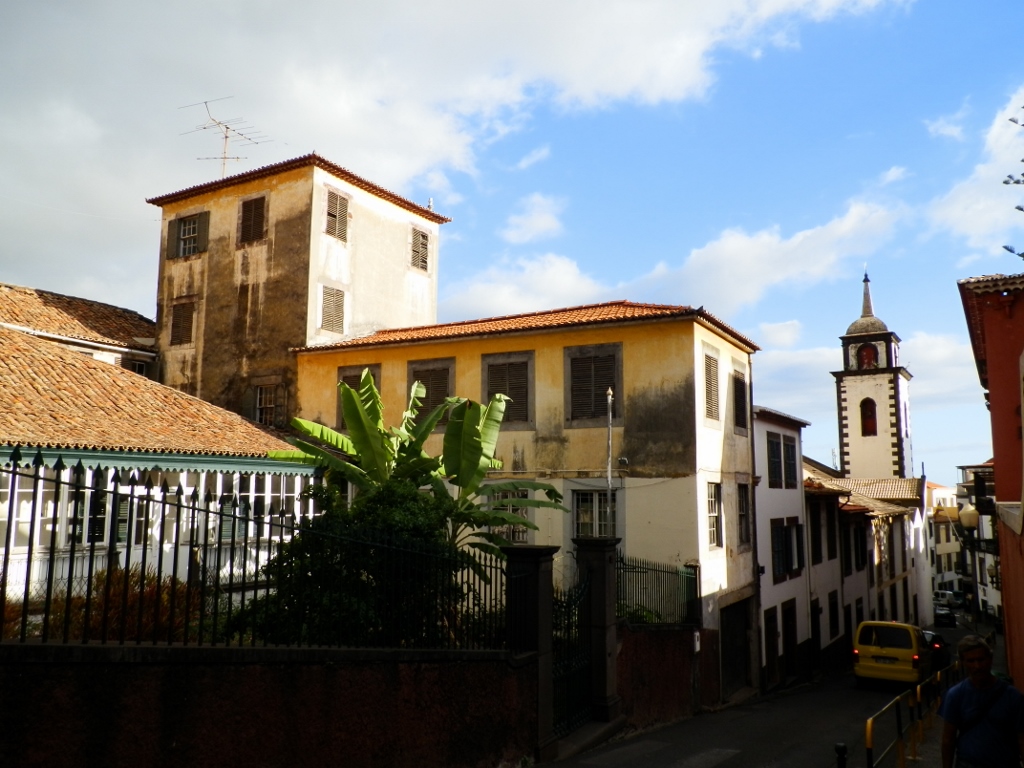 Less touristy parts of Funchal
Less touristy parts of Funchal
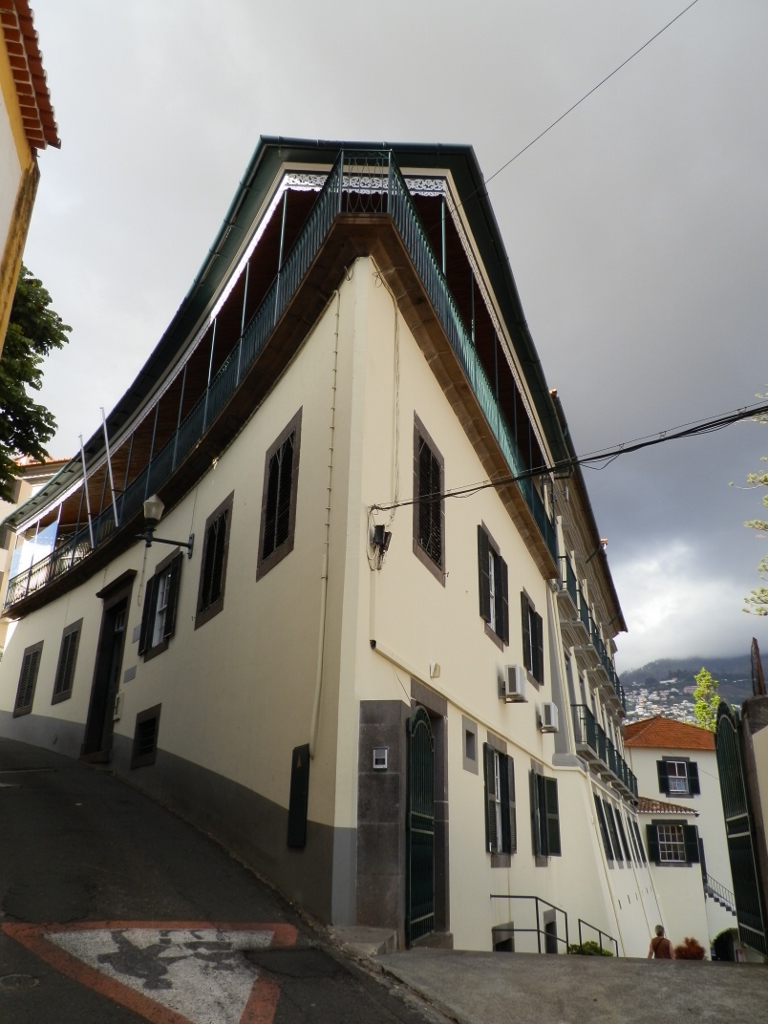 Less touristy parts of Funchal
Less touristy parts of Funchal
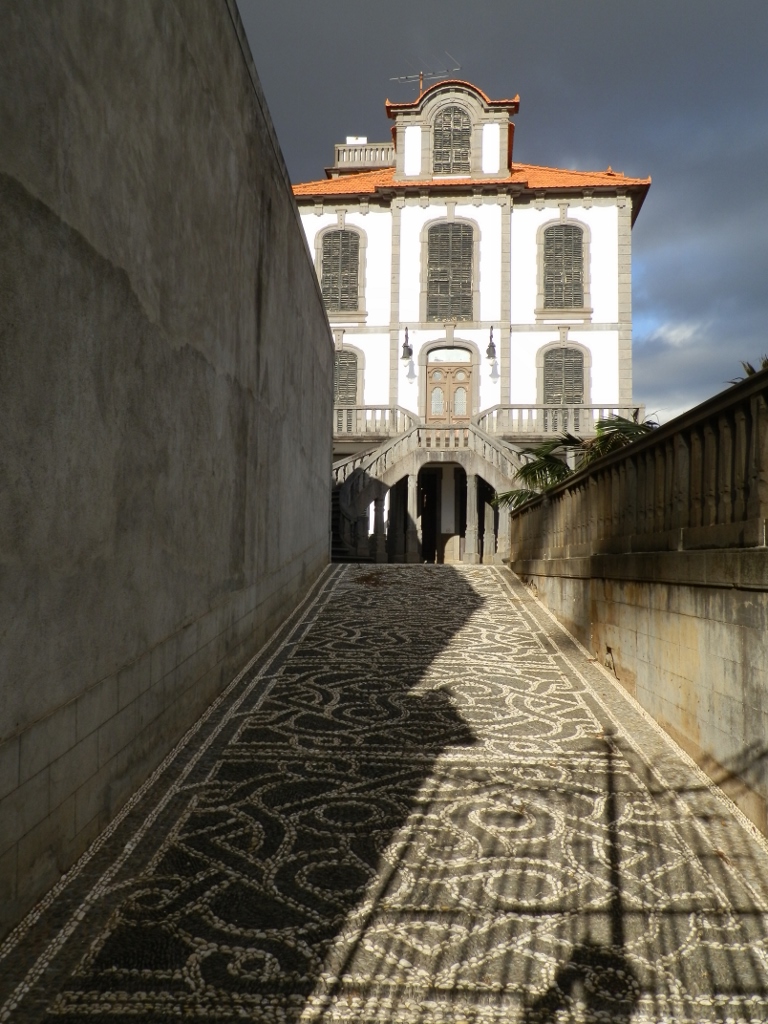 I have seen on internet that there is an apartment to rent here
I have seen on internet that there is an apartment to rent here
And so I got to my hotel and its terrace was completely in the shade now.
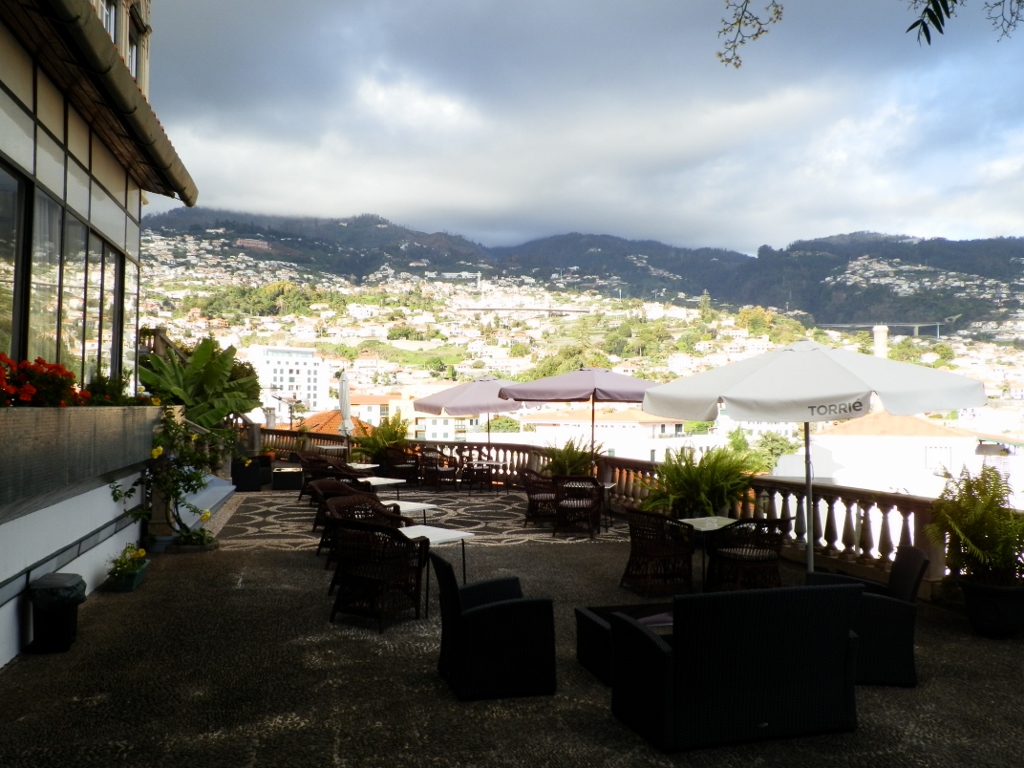 Terrace of my hotel in Funchal
Terrace of my hotel in Funchal
Then I went up to my room and there on the roof of the hotel, where there was a small pool surrounded by a terrace, I was greeted by the Sun that was getting ready to set and whose light accentuated the wonderful colours of the hills and houses of Funchal. I sat there in order to enjoy the beauty of the sights for a while.

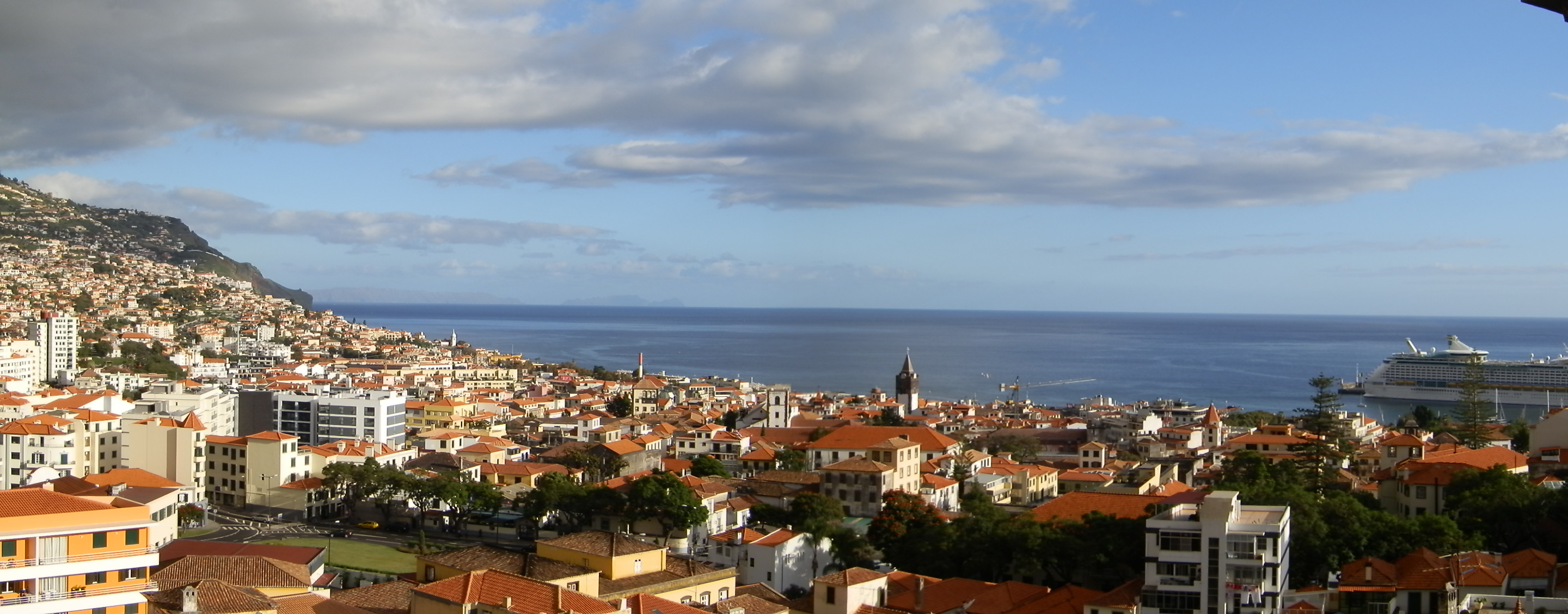
After this brief enjoyment, I returned to the centre again. I first went to buy a couple of bottles of Madeira wine. For the purpose I went to the shop of the Madeira Wine Company that is located in the very centre of Funchal. A totally tourist thing. Still, since I had already decided to buy a couple of bottles of Madeira wine as a kind of a souvenir from the visit and taking into account that I was to fly again via a couple of European airports, in order not to carry glass bottles of wine with me the whole day, I decided to buy the wine in this shop, then they should pack it well and I would put it into my bag that went with the checked luggage. I did as planned and everything went on perfectly.
By the way, I have already said earlier that there are four main types of Madeira wine and within each type there are different subtypes depending on the amount of time they were aged. I treated myself to a bottle of Malmsey and a bottle of Verdelho (younger versions of both wines, since older ones surpass my financial capabilities and my inclinations, as well as my knowledge of wine). The reason for such a choice was as follows: Malmsey is the best know version of the wine, thus being a special treat of a kind, while the Verdelho bottle was bought because I had read somewhere that this wine goes very well with Madeira cake.
It is interesting that regardless of the name, this cake was not created on Madeira at all, but rather it was invented by the British. Namely, around the middle of the 19th century, Madeira wine was very popular in the UK and so they came up with this recipe in order for the cake to go well with the wine, specifically with Verdelho. This is a type of a sponge cake with a lot of butter and lemon flavour. When I returned home from Madeira, I found a recipe for this cake and so the wine was drunk. As for the original cake, with time it gained certain independence and today it is often served not with wine, but with coffee or tea. In my case, too, the making of this cake has had its history: I don’t make it often, quite the contrary, but in the meantime I have developed my personal recipe by combining ideas from a few different recipes I have come across. Now, I will make, I think, an appropriate step out from my travel stories and I will share a photo and the recipe for my “Madeira Cake” which I have recently made (and served with coffee). On the other hand, this photo represents a perfect combination of several of my “loves” – travelling and learning through these travels about the world in the broadest sense of meaning, cooking and certainly eating, as well as making pottery dishes – both the porcelain plate and mug in the photo are the creation of my own hands.
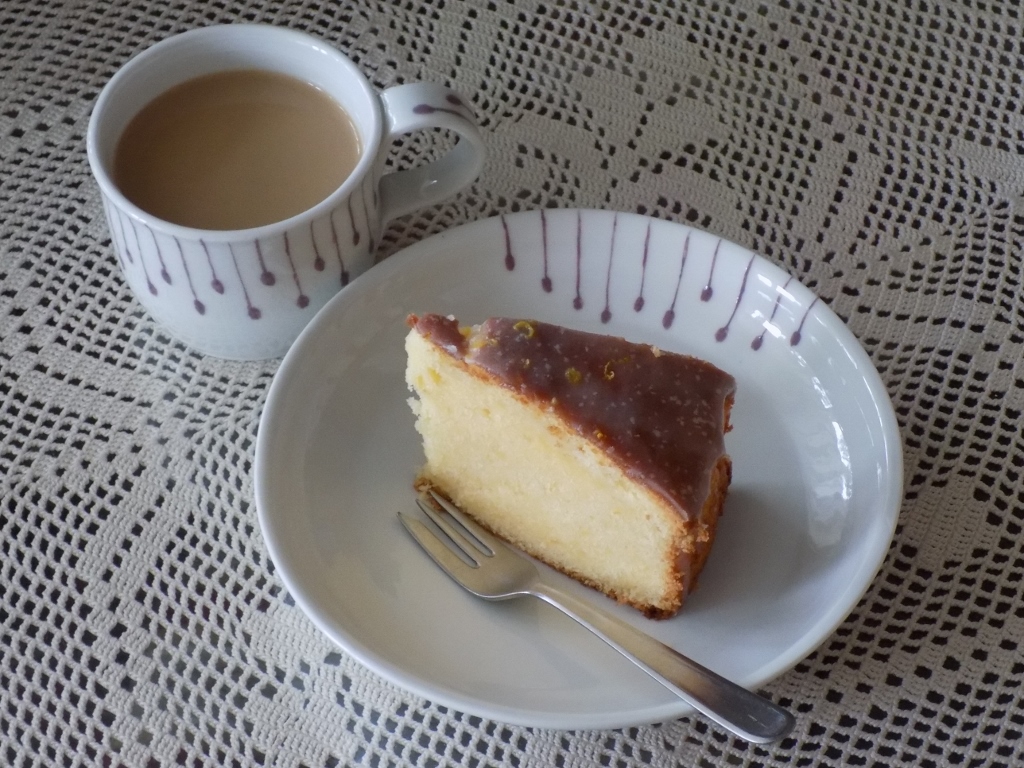
My version of “Madeira Cake”
Madeira Cake
- 4 eggs that must be measured (!), of course after being broken and put into a bowl
- the same weight of butter
- the same weight of caster sugar
- the same weight of all-purpose flour
- 1 tsp of baking powder
- a little milk
- zest of one lemon
- juice of one lemon
The butter and caster sugar should be mixed very well until fluffy and the sugar has dissolved. Eggs are added, one by one, and after the third one you should also add a little flour to keep the batter smooth. After all the eggs, you add the rest of the flour with the baking powder. The batter is loosened slightly with some milk and finally you add the zest and juice of one lemon combining it all nicely. Put it in a round baking tin and bake at 170 degrees C.
As an addition, I put on the still warm cake a mixture of 1 tablespoon of sour cream, juice of one lemon and a couple of tablespoons of powdered sugar.
In the end you get a relatively dense sponge (not hard), but it is fantastically tasty and lemony.
And now, let me go back to Madeira and the moment I bought the two wine bottles. I put in my small backpack the well-packed bottles ready for a long journey in my travel bag in the fuselage of three consecutive aircrafts and met with Joao again. Then we went to the marina where we enjoyed a little more in the late afternoon.
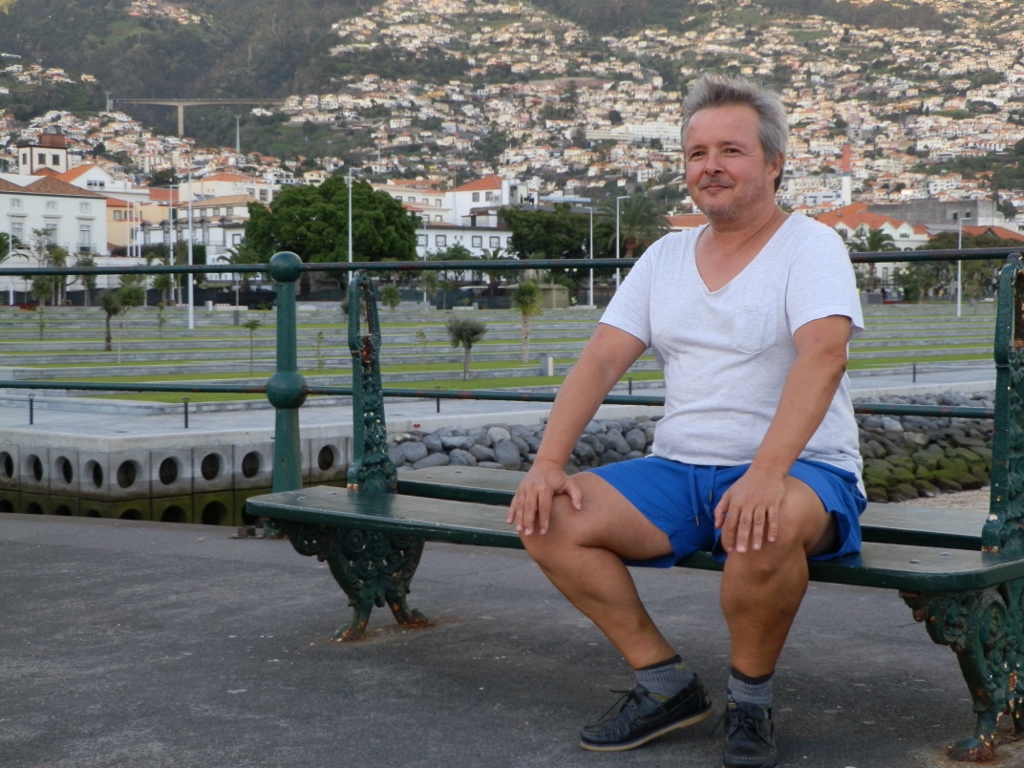 My brilliant Madeira friend - Joao
My brilliant Madeira friend - Joao
This evening I wanted again to have some sea food for dinner and with Joao went to that pedestrian street with a lot of restaurants, Rua da Carreira. We did wander a little, but then we found a restaurant to our liking and the food was great there. I felt like licking the plate; it was that good and tasty for me. Still, since we were getting up early for our trip to Porto Santo, we parted relatively early and I went back to my hotel. Before getting up to my room, at the terrace of the hotel I had a glass of vinho verde from that bottle I had bought at the bar a couple of days earlier which they had kept nicely in their fridge.
After a rather bad night (I slept little and woke up often worrying that I may not wake up on time), I got up at 6.30 and although the Sun had still not come up from behind the horizon, there was some light outside. Almost every time I wake up at dawn which, it seems to me, tends to be so beautiful, I always feel sorry that I don’t have the habit of getting up so early. I think that we miss out on so many gorgeous mornings by sleeping through.
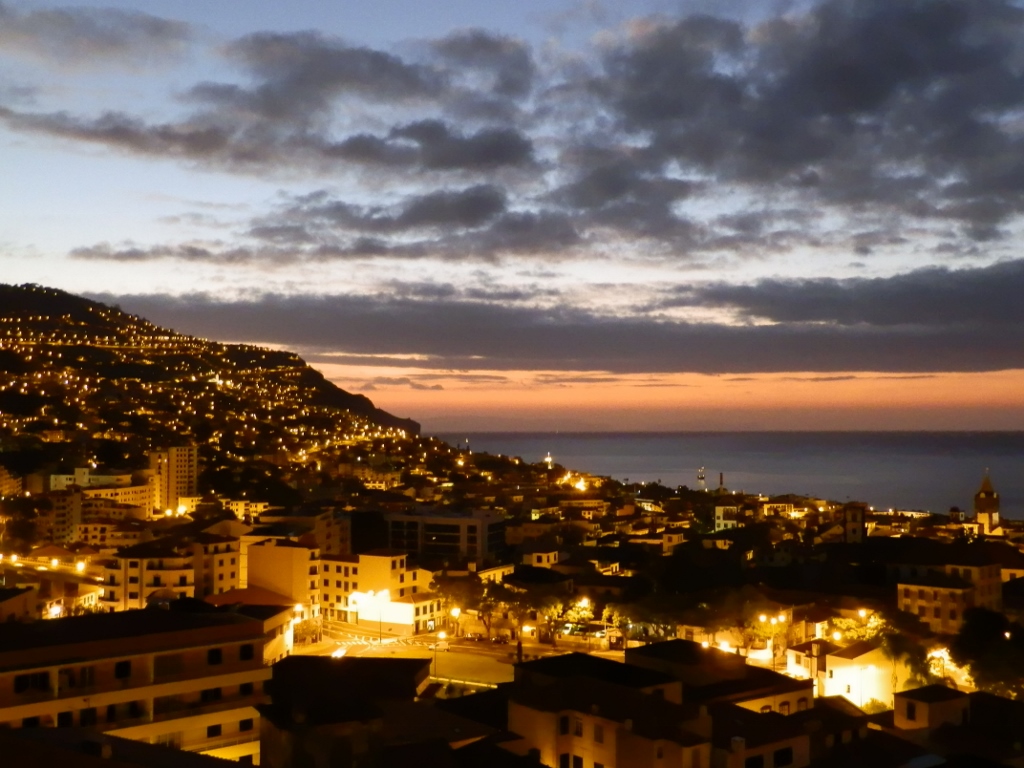 Dawn in Funchal
Dawn in Funchal
When I got ready, I dashed down the steep streets of Funchal and so I got to the centre. The agreement with Joao was to meet near the Bank of Portugal at 7.15 and then to continue to the port together. I took the advantage of the short time I was waiting for him to take a few photos of the centre of Funchal in the very early morning. Everything looked stunning. Almost deserted, but truly beautiful.
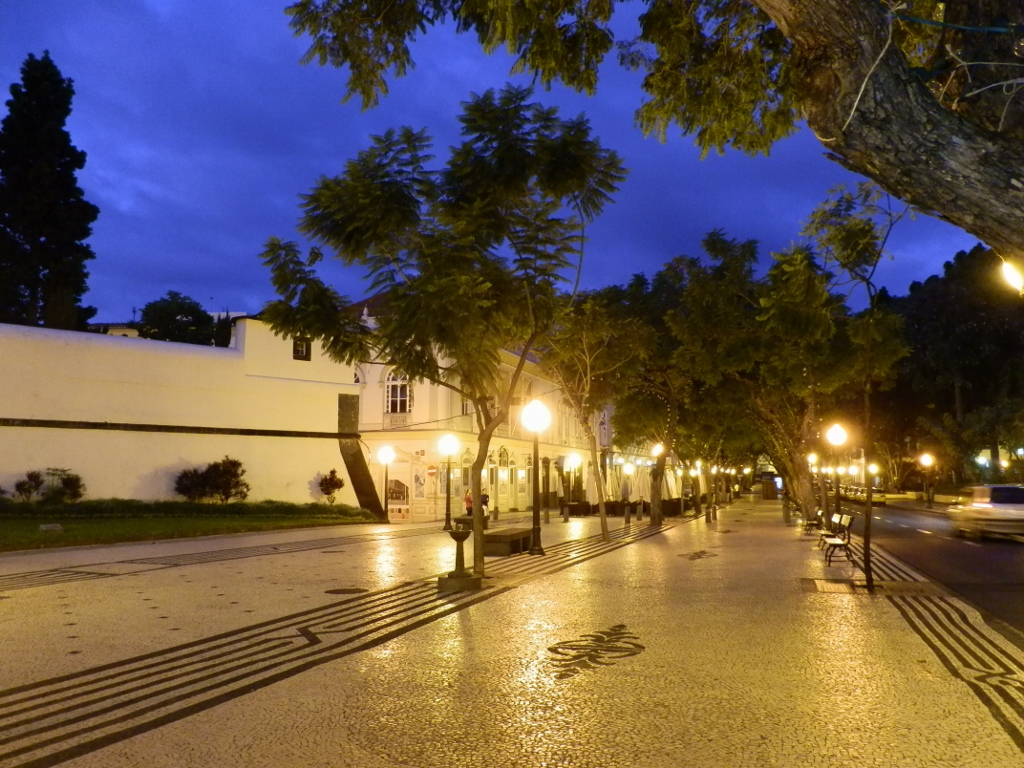 Broad pedestrian area beside Av. Arriaga and the back side of Saint Lawrence Palace
Broad pedestrian area beside Av. Arriaga and the back side of Saint Lawrence Palace
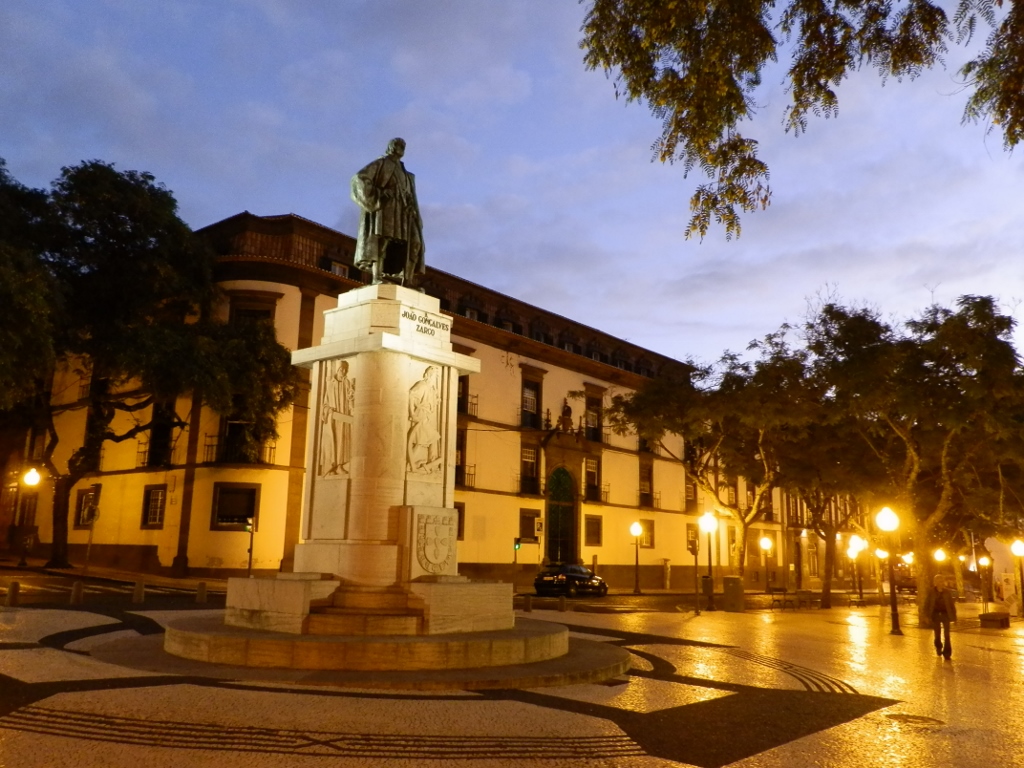 Monument to João Gonçalves Zarco, the navigator who discovered Madeira
Monument to João Gonçalves Zarco, the navigator who discovered Madeira
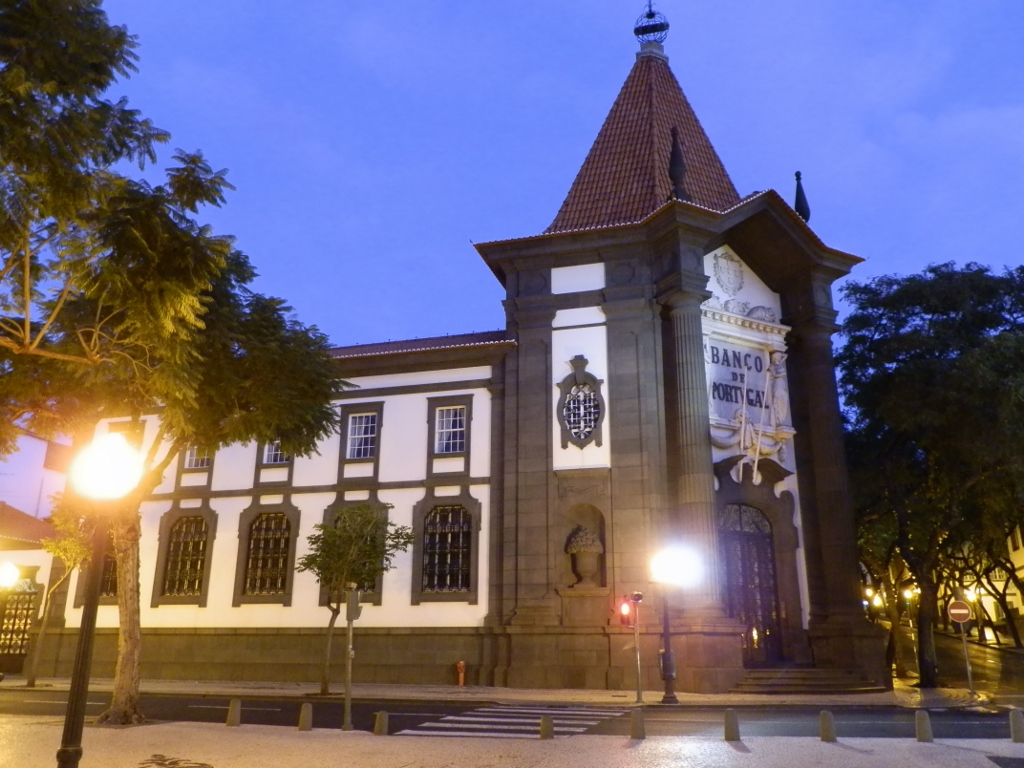 Bank of Portugal
Bank of Portugal
When Joao came, we headed together for the port and so I also took a photo of Saint Lawrence Palace (Palácio de São Lourenço).
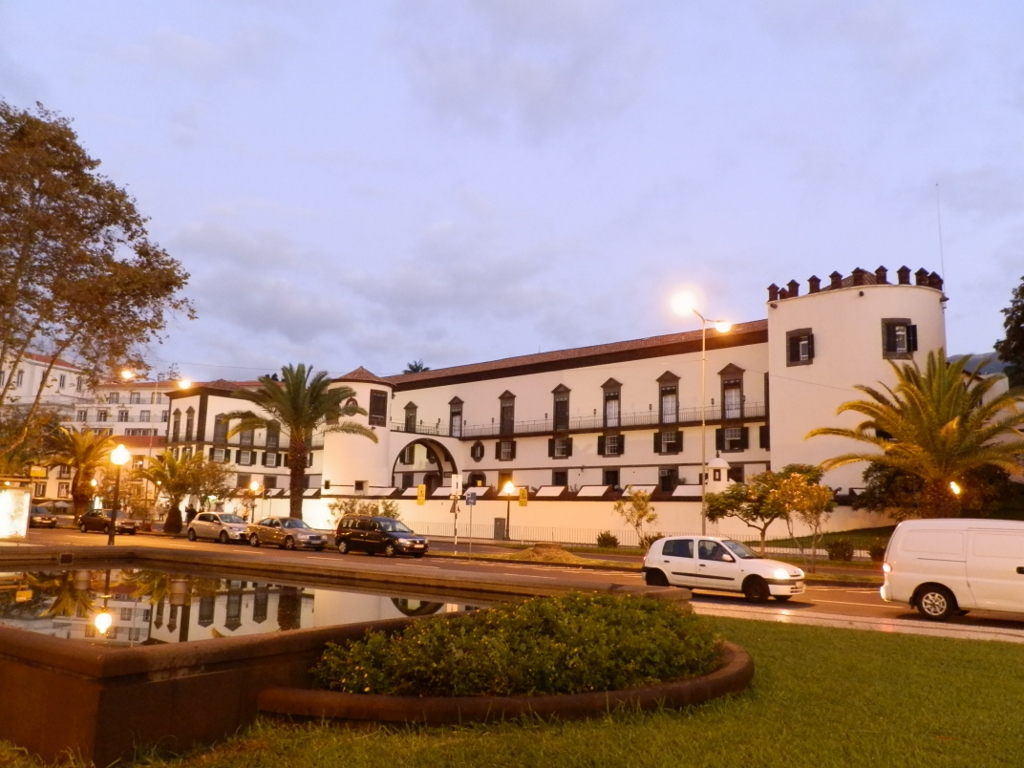 Saint Lawrence Palace
Saint Lawrence Palace
In the port we saw the ship that would take us to Porto Santo island.
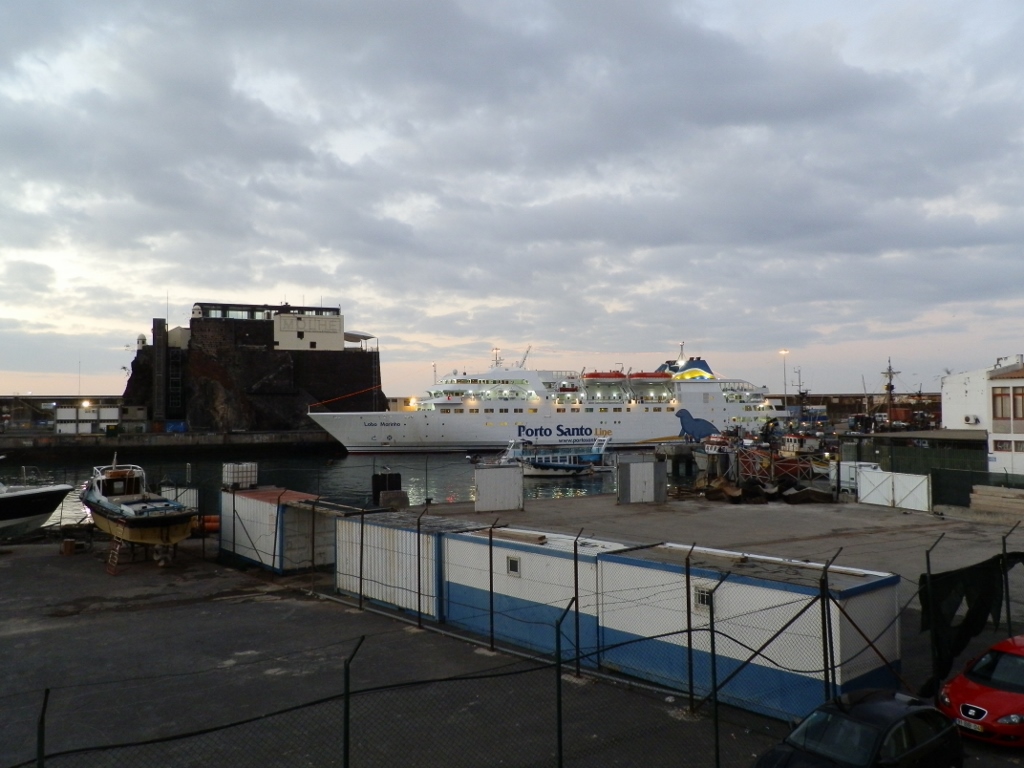 Port and the ship that sails to Porto Santo
Port and the ship that sails to Porto Santo
The ship was departing at 8 in the morning and according to the plan we were to arrive in Porto Santo around 10.30. The return was at 6 pm and the expected time of arrival in Funchal was around 8.30 in the evening. Joao and I went to the uppermost deck and there was a truly beautiful view from there in all the directions.
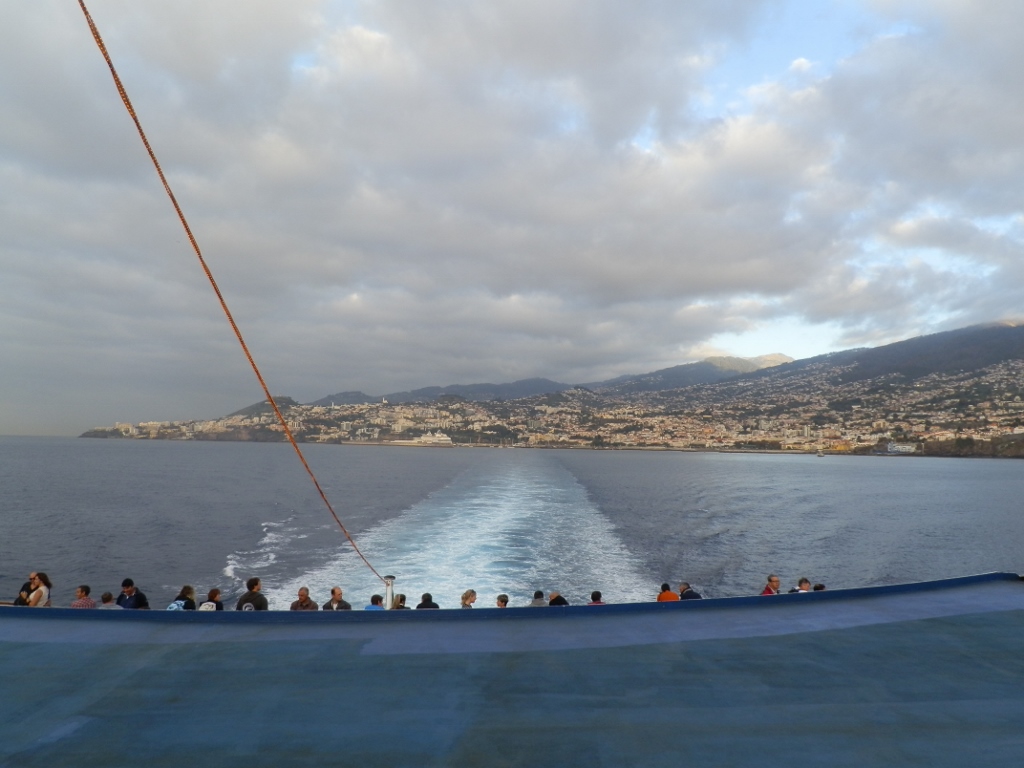 Ship heading for Porto Santo has left the port
Ship heading for Porto Santo has left the port
As we were standing on the uppermost deck, Joao pointed at different things and explained what was what. As the ship was sailing eastwards, I could nicely see the structure of the interesting airport runway which I have written about in part 6 of my Madeira travel stories.
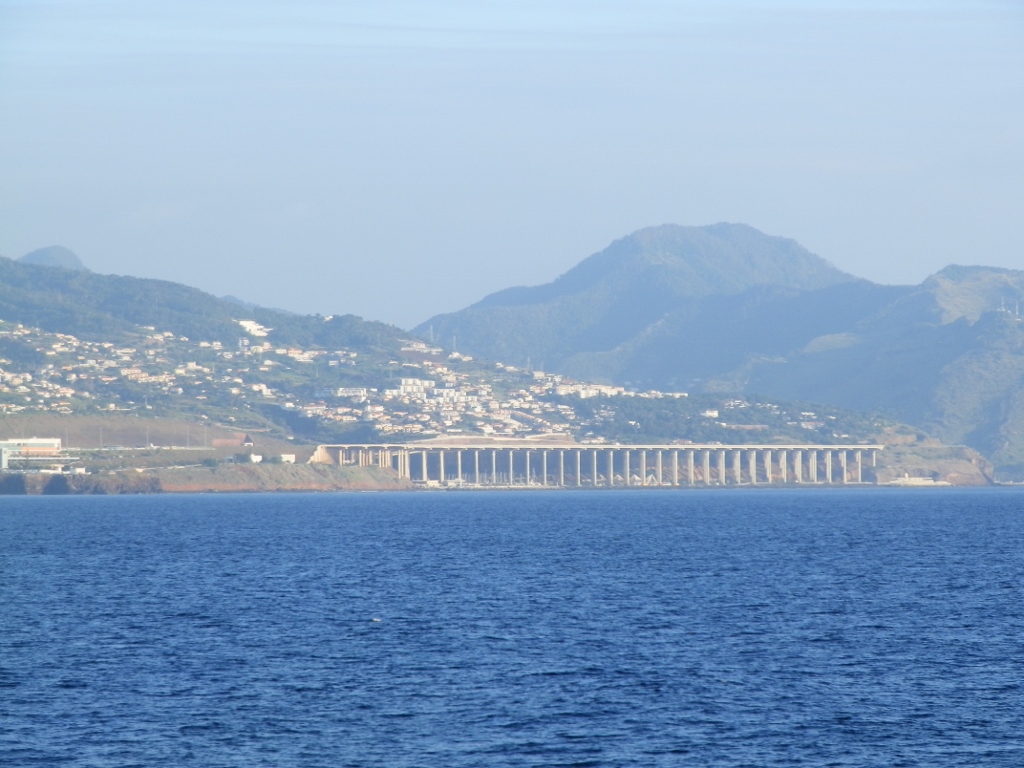 International airport at Madeira
International airport at Madeira
And then at the far east of Madeira we could see the elongated headland called Point of Saint Lawrence (Ponta de São Lourenço).
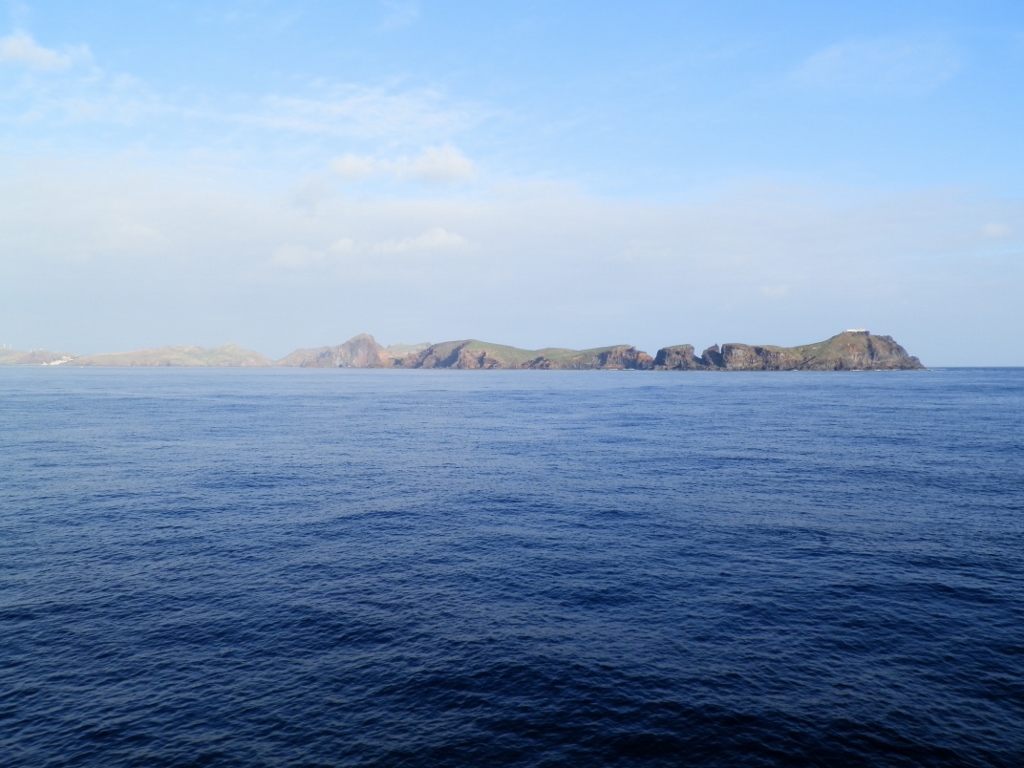 Point of Saint Lawrence
Point of Saint Lawrence
After this, the ship went into the open waters, i.e., there was no land to protect the ship and passengers on the upper deck against the strong wind and mild rocking, so Joao and I withdrew into the interior of the ship. The following map shows the position of islands Madeira and Porto Santo, although the straight line certainly does not mark the ship’s route. It is there just to make a connection.
Right in line with the programme, a little short of two hours and a half after the departure, the ship slowed down for we reached Porto Santo island and had to approach the port at a lower speed.
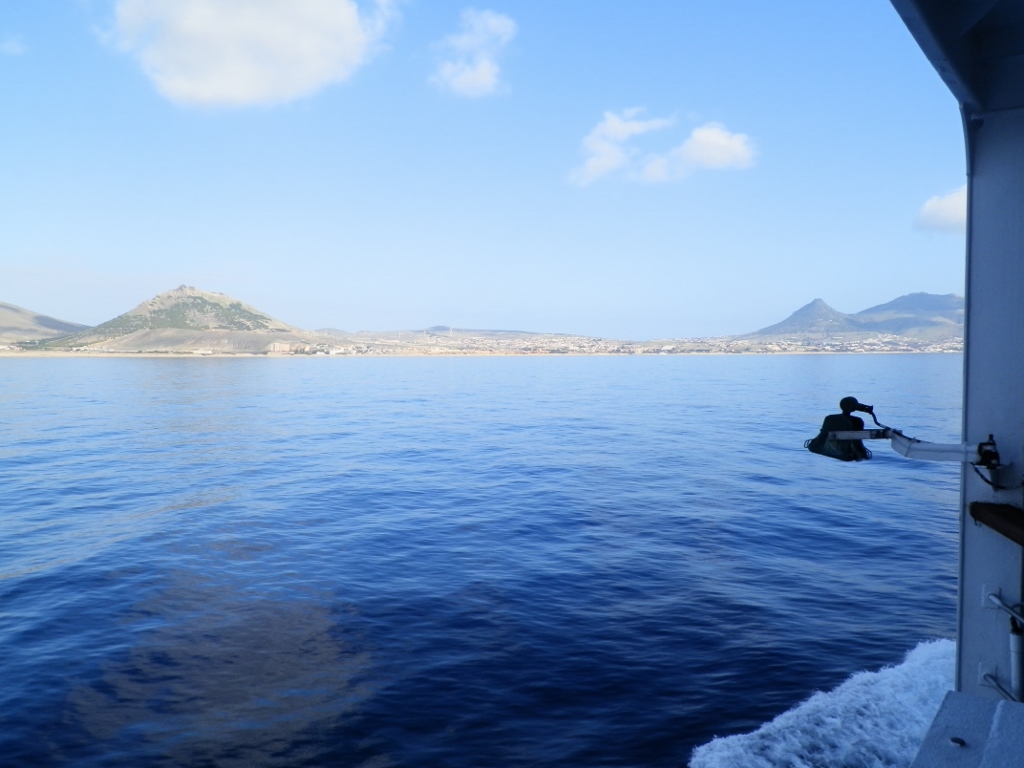 Arriving in Porto Santo
Arriving in Porto Santo
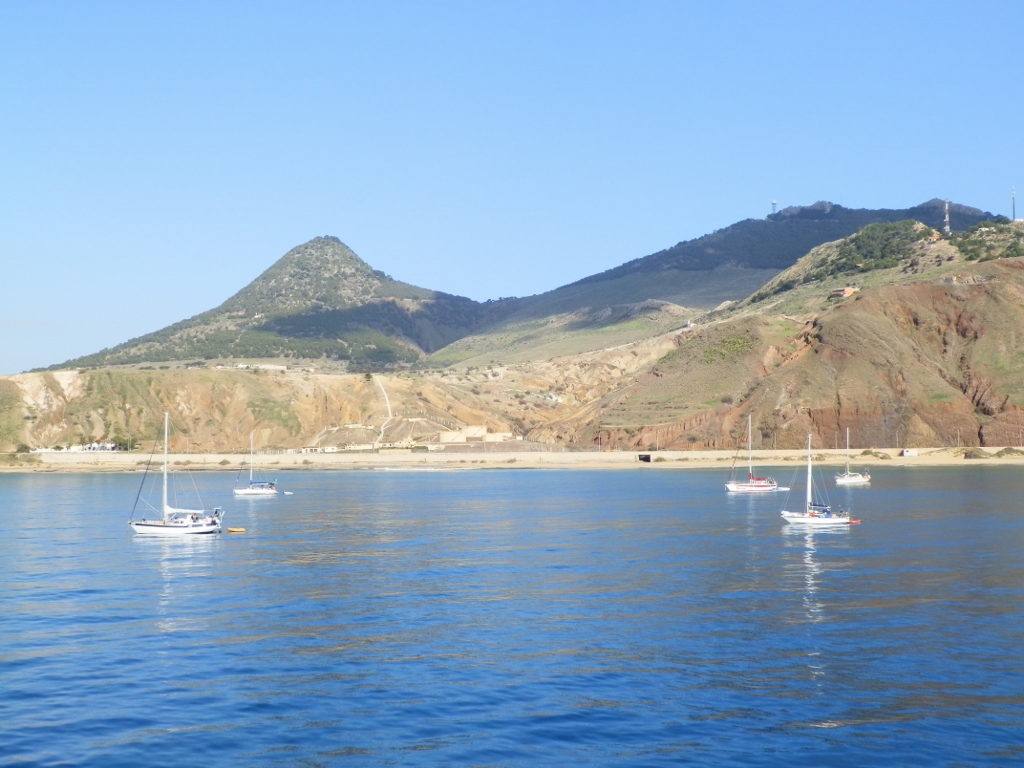 Arriving in Porto Santo
Arriving in Porto Santo
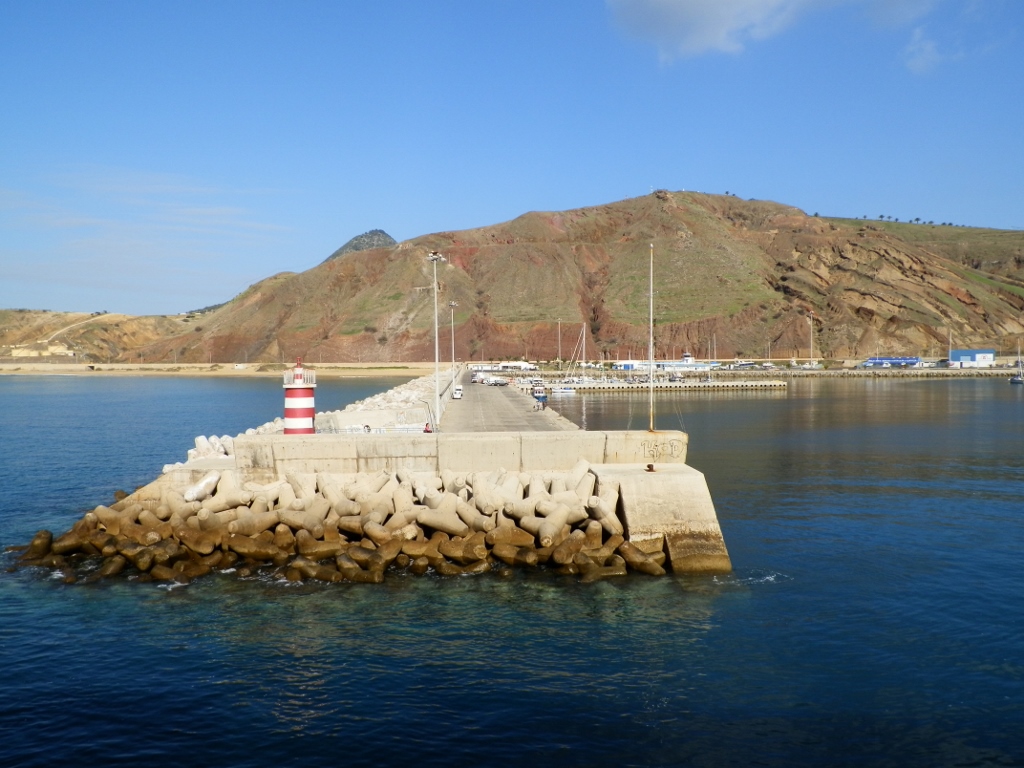 We are going to park here
We are going to park here